
What is a Specialist Tour Operator?
A specialized tour operator provides unique and niche travel experiences. You can think of food tours, cooking classes, wine tastings, and hiking tours. Any tour provider that offers services in a niche is a specialized tour operator.
In recent years, there has been a rising interest in specialized tourism. For example, 2021 data shows that 68% of travelers are shifting towards sustainable tourism. Also, the Global Wellness Institute reports that 64% of travelers want wellness vacations. In addition to these, food tourism is constantly growing. In the U.S. alone, 95% are looking for 'some kind of unique food experience', and the numbers are growing globally.
In this blog, we'll learn more about specialized tour operations. If you are a travel agent or tour provider looking for a fresh marketing approach in 2024, this is for you. Below are 5 ideas on how to curate specialized travel experiences that meet travelers' demands.
1. Niche Expertise

Specialist tour operators have in-depth knowledge and expertise in specific travel niches or themes, such as adventure travel, wildlife safaris, cultural immersions, or culinary tours.
Did you know that some specialist tour operators specialize in niche markets like "dark tourism," offering tours to historically significant but often somber places such as battlefields, prisons, or disaster sites?
Tips for tour operators:
- Know Your Stuff : Really get to know everything about the special travel area you're focusing on, like history and interesting facts.
- Tell Great Stories : Make your tours interesting by telling cool stories. Work with local people who know a lot about the place to make it more real.
- Listen and Change : Pay attention to what your travelers like and don't like. Use their feedback to make your tours even better.
2. Customized Experiences

They often have travel agency to offer customized or tailor-made itineraries to cater to the unique interests and preferences of their target audience, allowing travelers to personalize their journeys.
Many specialist tour operators provide travelers with the opportunity to design their own itineraries, offering a level of personalization that can include specific activities, accommodations, travel arrangements, or even dietary preferences.
- Offer Tailor-Made Options : Give your travelers the chance to create their own itinerary. This could mean letting them pick specific activities, choose their own accommodation, or even request special meals.
- Ask for Preferences : Before the trip, ask your travelers about their interests, what they want to see and do, and any special needs they might have. Use this info to make their experience more personal.
- Flexible Scheduling : Allow some flexibility in your itinerary. This way, travelers can spend more time on the activities they enjoy most or explore additional sites that catch their interest during the tour.
3. Destination Specialization

Some specialist tour operators concentrate on specific destinations or regions, becoming experts in those areas and offering comprehensive experiences within them.
Other specialist tour operators focus exclusively on regions with unique natural wonders, like the Galápagos Islands, where they specialize in eco-friendly and sustainable travel experiences.
- Be a Local Expert : Learn everything about the specific region or destination you focus on, including its culture, history, and natural wonders. This knowledge will help you create in-depth, engaging tours.
- Highlight Unique Features : Showcase what makes your destination special, like unique natural attractions or cultural experiences. For example, if you specialize in the Galápagos Islands, emphasize eco-friendly tours that highlight the unique wildlife and ecosystems.
- Sustainable Practices : If your destination is known for its natural beauty, like the Galápagos, prioritize sustainable and eco-friendly travel practices to preserve the environment. This is not only good for the planet but also appeals to eco-conscious travelers.
4. Exclusive Access

They may provide package tours with exclusive access to attractions, accommodations, or activities that are not readily available to mass-market tour operators, enhancing the uniqueness of the tours.
Specialist tour operators might arrange exclusive access to archaeological sites before or after regular opening hours, allowing travelers to explore these historic treasures without the crowds.
- Arrange Special Visits : Work to get special access to popular sites, like arranging visits to archaeological sites outside of normal hours. This lets travelers enjoy these places without the usual crowds.
- Unique Experiences : Offer activities or experiences that aren't usually available to the general public. This could be anything from a private tour with a local expert to exclusive access to certain areas.
- Build Relationships : Develop good relationships with local attractions and accommodation providers. This can help you arrange special access or unique experiences for your travelers.
5. Passionate Guides

Specialist tour operators often employ passionate and knowledgeable tour guides who are experts in the niche or destination, ensuring travelers receive a high level of expertise and engagement during their journeys.
In the world of birdwatching tours, specialist operators often employ ornithologist guides who are not only experts in bird identification but also passionate advocates for bird conservation, enriching travelers' experiences with their deep knowledge and enthusiasm.
- Hire Expert Guides : Look for guides who are not just knowledgeable but also passionate about the niche. For example, in birdwatching tours, hire ornithologists who are experts in bird species and conservation.
- Train for Engagement : Ensure your guides are trained not only in factual knowledge but also in engaging storytelling and interaction with travelers. This enhances the overall experience.
- Focus on Special Interests : Match guides with specific interests or expertise to relevant tours. A guide's enthusiasm for their specialty, like bird conservation, can greatly enrich a traveler's experience.
Key Takeaways
As we wrap up our exploration of specialized tour operators, it's clear that this niche-focused approach in the tourism industry is not just a trend, but a growing sector meeting diverse traveler demands.
From the increasing interest in sustainable tourism and responsible travel, to the rise of wellness vacations and unique culinary experiences, the opportunities for specialized tour operators are vast and varied.
To stand out in this competitive market, here are three key actionable tips that you, as tour and activity providers, can implement:
- Embrace Your Niche : Whether it's eco-tourism, culinary experiences, or wellness retreats, dive deep into your niche. Know your audience and tailor your offerings to their specific interests and needs.
- Prioritize Authentic Experiences : Travelers are seeking genuine, immersive experiences. Collaborate with local communities and experts to offer authentic and unique tours that cannot be found elsewhere.
- Leverage Technology and Innovation : Utilize the latest technology, like AI for personalized itinerary planning or virtual reality previews of tours, to enhance the customer experience and streamline operations.
By focusing on these areas and continually adapting to the evolving desires of travelers, you can create memorable and distinctive experiences that not only meet but exceed the expectations of your clientele. Remember, in the world of specialized tourism, it's all about delivering uniqueness, authenticity, and quality.
Our Happy Specialized Tour Operators
TicketingHub has worked with specialized tour and activity providers for years now. Some of them are now renowned for their food tours, city tours, and special events. Read our case studies below and see what helped them succeed in this rising market.
- The Secret Food Tours
- Egypt's Sound and Light Show
- Belfast City Tours
People Also Ask:
1. why is online booking software helpful for specialist tour operators.
An online booking software is a game-changer for specialist tour operators. This type of software streamlines the booking process, making it easier for travelers to secure their spots on specialized tours.
For the operator, it simplifies managing reservations, tracks customer preferences, and automates tasks like sending confirmations and reminders.
Online booking systems offer efficiency and personalized service, particularly for specialist operators who deal with customized and niche travel packages. It saves money and time, both for the tour operator and the traveler, enhancing the overall experience.
2. What is a specialist tour operator?
Specialist tour operators are tour operators in the travel industry who focuses on offering specialized and niche travel experiences. Unlike mass market tour operators who cater to broad, general travel demands, specialist tour operators offer in-depth expertise in specific areas.
These can range from eco-tourism, adventure travel, cultural tours, to specific country or regional focuses. They provide tailored package holidays and tours that cater to specific interests and often offer more personalized service than other tour operators.
3. What is a specialized tour?
A specialized tour is a travel package designed to cater to specific interests or themes. Unlike general tour packages offered by many travel agencies, specialized tours delve deep into a particular area, offering unique experiences such as eco-tourism adventures, culinary tours in specific countries, or in-depth exploration of national parks.
These tours are usually crafted by specialist tour operators who possess deep knowledge and passion for the niche, ensuring an enriching and authentic experience for the traveler.
4. What are the main three types of tour operators?
The three main types of tour operators in the travel industry are inbound tour operators, outbound tour operators, and domestic tour operators.
- Inbound Tour Operators : These operators specialize in arranging tours and travel packages for travelers coming into a country. They work closely with hotels, airlines, and ground operators to provide a comprehensive travel experience in the destination country.
- Outbound Tour Operators : These receptive tour operators organize trips for travelers stepping out of their home country to visit other destinations worldwide. They often work with airlines, hotels, and travel operators in different countries to arrange all travel components.
- Domestic Tour Operators : They organize tours for domestic travelers within their own country. They specialize in knowing the best local spots and experiences that appeal to domestic travelers, including hotels, transport, and leisure travel activities.
Each type of tour operator plays a crucial role in the tourism ecosystem, catering to different segments of holidaymakers and travelers. It offers varied services like transport, accommodation, and travel packages.
5. What types of niche travel experiences do specialist tour operators offer?
Specialist tour operators offer a wide range of niche experiences, including wildlife safaris, cultural immersions, adventure travel, culinary tours, and more. They cater to specific interests and passions, providing travelers with unique and customized journeys.
6. Are specialist tour operators more expensive than regular tour companies?
Specialist tours can cost widely depending on niche and customization. While some specialist tours may have a premium price due to exclusive access or unique experiences, others can be competitively priced. It's essential to compare options and assess the value of all arrangements and experiences offered.
Get the latest news and stay in touch with the industry secrets.
By clicking "Subscribe", you agree to our Privacy Policy and the data we do collect.

Online Travel Booking Tool: How Magic Link is Solving the Rebooking Problem
.webp)
FareHarbor vs Rezdy vs TicketingHub: Honest Tour Booking Software Comparison Guide

Why Online Reputation Management Is Important for Tour Operators

How to Craft a Perfect Tourism FAQs Page for Your Tours
Keep Reading

Discover the role of specialized tour operators. From wellness to food tours, gain insights in how they create authentic travel experiences.
How Can Tour Operators Contribute to Sustainable Tourism?
Explore how tour operators contribute to sustainable tourism, with eco-friendly strategies and community support tips.

The mass tourism industry EXPLAINED
Disclaimer: Some posts on Tourism Teacher may contain affiliate links. If you appreciate this content, you can show your support by making a purchase through these links or by buying me a coffee . Thank you for your support!
Mass tourism is a prominent part of the tourism industry. Associated with the traditional package holiday, well-known holiday resorts and famous tourist attractions, many areas both benefit and suffer at the hands of mass tourism. But what exactly is mass tourism and how does it impact the wider tourism industry?
In this article I will explain what mass tourism is, with some useful definitions. I will then outline the characteristics of mass tourism, the evolution of mass tourism and the positive and negative impacts of mass tourism. Lastly, I will provide some examples off destinations that are known for their mass tourism industries.
What is mass tourism?
Mass tourism definitions, extreme concentration of tourists, saturation of a destination, organised groups, accessibility, media and promotion, the stage of consolidation, psychocentric tourists, how did mass tourism evolve, enclave tourism, beach holidays, theme parks, major tourist attractions, mountain climbing, positive impacts of mass tourism, negative impacts of mass tourism, how can we manage mass tourism in a sustainable way, mass tourism destinations, mass tourism: conclusion, further reading.
Well, the clue is in the title!
Mass tourism is essentially tourism that involves ‘the masses’.
So, what is a mass? Well, this is not exactly clear. But lets just say its usually a lot- like thousands or tens of thousands or more.
Mass tourism can occur in a variety of tourism situations. It could be a coastal resort, such as Benidorm. It could be an area that is home to a major tourist attractions, such as the Great Wall of China . It could be a picturesque village or remote island.
Wherever mass tourism occurs, it relies on the same concept- there are large amounts of tourists , often filling or exceeding capacity, in a given location at one time.
For decades, mass tourism has been a widely used term in tourism literature as well as in wider society. Yet, to this day there has never been a clearly agreed definition and content.
According to Poon (1993), mass tourism refers to the movement of a large number of organised tourists to popular holiday destinations for recreational purposes. It is a phenomenon which is characterised by the use of standardised package products and mass consumption. Conceptually, this type of tourism features standardized leisure products and experiences packaged for mass tourists.
Hilallali (2003) describes mass tourism as ‘an offspring of industrialisation and democracy, good student of consumption and globalisation .
As noted by Dehoorne et Theng in 2015, Mass tourism is the epitome of aggressively large-scale sold standardized packages stands in stark opposition to elite or luxury tourism.
Naumov and Green (2016) state that mass tourism refers to the movement of a large number of organised tourists to popular holiday destinations for recreational purposes.
Whilst these definitions are useful, I personally feel that they are all missing some important detail. These definitions quite rightly acknowledge the fact that organised packaged tourism products are significant facilitators of mass tourism. But they fail to acknowledge the growing dynamic independent tourist.
In today’s world, consumers are more independent than ever. We can find a cheaper deal online ourselves than what the travel agent is offering. We can plan our own itinerary using the information presented by travel blogs. We don’t need a guide when we can download the information we need on our phones. But just because we are not part of a mass organised group, does not mean that we are not mass tourists.
Thousands of tourists flock to Santorini’s picturesque white streets each July. Thousands of people line the streets of Shanghai to get a look at the light show on the Bund each evening. People struggle to get a photo without the crowds of tourists behind them at the Pyramids of Giza in Egypt. Are all of these people on an organised package holiday? I very much doubt it.
In reality, most attempts to define the concept of mass tourism are indeed outdated, failing to take into account post-modern tourist motivations and behaviours. In light of this, I have developed my own definition of mass tourism below…
Mass tourism can be defined as ‘extreme concentrations of tourists in any one place, resulting in saturation of the place’. Mass tourism cannot be characterised by specific numbers or values, because every destination has different carrying capacities. Rather, mass tourism occurs when there are too many tourists for a destination to comfortably accommodate.

Characteristics of mass tourism
OK, so now we have defined mass tourism, what are the identifying characteristics? The most notable characteristics of mass tourism include: extreme concentrations of tourists; the saturation of a destination, travel in organised groups, good accessibility to a destination, media influence, the stage of consolidation and tourists who are described as psychocentric.
I will explain what each of these means below.
The most obviously characteristic of mass tourism is that there are a lot of tourists. What is a lot, I hear you say? Well, I can’t quite answer that question-sorry.
Each type of tourist destination is different. Some places are big, others are small. In fact, what is a destination? Well, this isn’t entirely clear either.
In the context of mass tourism, a destination could be a city, a holiday resort or the area surrounding a popular tourist attraction. The size of the destination doesn’t actually matter though. The important fact is that there are more tourists that come to the area at a given time than the destination can comfortably cope with.
OK, so here comes another subjective term- what does ‘comfortably cope’ mean? Well, what I mean by this, is that if the tourism has adverse effects as a result of the visitor numbers, it is no longer ‘comfortably coping’. This could include environmental degradation, gentrification or adverse social impacts, for example.
So the major characteristic associated with mass tourism is that there are too many tourists in a given area, big or small.
Having too many tourists leads to saturation of a tourist destination.
If a tourist destination is saturated, there are likely to be more tourists than members of the local community. Revenue from tourism-related activities is likely to dominate the economy. Many of the negative economic , environmental and social impacts of tourism are notable.
Mass tourism is generally associated with the concept of overtourism . Overtourism refers to the issue of having too many visitors in a given time in a given place, which impacts negatively on the tourist experience, the host community and environment.
Overtourism is a growing problem that can only be resolved by adopting principles of sustainable tourism management.
Mass tourism is associated with organised and packaged tourism.
Whilst not all mass tourists are package tourists, there is definitely a linear relationship between the two.
By default, group organised holidays bring large amounts of tourists to a destination at the same time. Whether this by via a coach tour, a day trip or through a tour operator, travel in organised groups brings large amounts of tourists together in one place at one time.
Group tourism is usually organised in a place because it has some particular value to the tourist. For example, there are many tours to visit the famous Abu Simbel attraction in Aswan, Egypt. Likewise, Sharm el Sheikh is a popular destination for package holidays and enclave tourism .
Mass tourism is directly associated with good accessibility.
The advent of the low cost airline largely fuelled the growth of the mass tourism industry. Airlines such as easyJet and Wizz Air put new tourist destinations on the map and helped to transport more tourists to existing tourist destinations than areas could [can] comfortable cope with.
Cheap flights has meant that many areas have become saturated with tourism. Cheap flights means that more people can afford to go on holiday, more often.
But accessibility isn’t just about price. The past two decades have seen the number of available flights increase exponentially. This has meant that destinations are more accessible to tourists.
Likewise, many destinations have become more accessible because they have developed their transport infrastructure. New airports, new roadways and improved rail infrastructure has meant that more tourists can reach more destinations around the world than ever before.
If we don’t know about a place then we don’t go to a place.
The media has placed a significant role in the growth of tourism to particular areas. From episodes of Karl Pilkington’s Idiot Abroad to Travel Man, starring Richard Ayoade , to Leonardo Dicaprio’s famous film, The Beach , there are plenty of places that have made their way to fame through the media.
One of the most notable developments in the promotion of tourist destinations is the development of social media. Have you ever heard of Insta tourism ? Yep- it’s a an actual type of tourism !
Social media platforms have raised awareness of many tourist destinations around the world that had previously featured only deep in our guidebooks.
In particular, Instagram’s geotagging function enables social media influencers to display the exact location of where their photographs were taken. This has resulted in tourists flocking to areas around the world that had previously experienced little or no tourism.

Butler, in his Tourism Area Life Cycle model , outlines the way in which a destination grows and evolves. In his model, there is a clear point at which tourist numbers are at their highest. This is the time when tourism is fully developed and is starting to the negative experience impacts associated with overtourism .
When tourism reaches the stage of consolidation in a destination, it is likely that it is also experiencing the concept of mass tourism.

Similarly to Butler, Plog looked at tourist motivations, mapping them to particular times during a destination’s development in his model of allocentricity and psychocentricity .
Plog demonstrated in his typological assessment, that when a tourist is classified as a psychometric tourist, they are likely to pertain to mass tourism as their primary choice of holiday type.
Psychocentric tourists typically travel in organised groups. Their holidays are typically organised for them by their travel agent . These travellers seek the familiar. They are happy in the knowledge that their holiday resort will provide them with their home comforts. These tourists enjoy holiday resorts and all inclusive packages . They are components of enclave tourism , meaning that they are likely to stay put in their hotel for the majority of the duration of their holiday. These are often repeat tourists, who choose to visit the same destination year-on-year.
The history of tourism is a long one and mass tourism plays a key role in the growth and development of the tourism industry .
The origins of mass tourism can be traced back to 1851, when Thomas Cook led his first organised group of tourists to the Great Exhibition in London. While his business model did change and adapt over the years, the concept remained the same- organised group travel.
Over time, more and more people were able to travel. After World War ii, people began to have more disposable income and new legislation was brought in to ensure that workers had paid holidays each year.
At the same time, destinations became more developed. They developed their transport infrastructure, promoted their destination for tourism and built the facilities and amenities that tourists required.
Mass tourism notably developed in Western societies since the 1950s. This was the result of a period of strong economic growth. Mass tourism was first seen in Western Europe, North America and Japan as these countries had strong economies and thus the general public were wealthier overall.
Globalisation has also fuelled the mass tourism industry. People can find the familiar on their travels. There are less surprises than there once was. We can research our trip on the Internet and watch travel shows to familiarise ourselves before we travel.
The mass tourism industry really started to boom with the advent of the low cost carrier . The average UK outbound tourist went from having one two week holiday per year to taking a big holiday and a couple of short breaks. People who couldn’t afford to go on holiday before, were now being brought into the market.
Types of mass tourism
Although many people associate mass tourism predominantly with the traditional package holiday model, there are in fact many different types of mass tourism.

Examples of enclave tourism destinations : Sharm el Sheikh, Egypt ; Kusadasi, Turkey; Costa Blanca, Spain.
Mass tourism is commonly associated with enclave tourism .
Enclave tourism is essentially tourism that takes place in a space that is segregated from the community outside. It is in its own ‘bubble’, so to speak.
Enclave tourism implies a conscious decision to segregate tourists from the general population . This is usually in the context of an all-inclusive environment such as a cruise ship, hotel or resort complex.
Enclaves are enclosed and self-contained physically, socially, and economically. This means that tourists have hardly any reasons to leave the enclave.

Examples of mass tourism beach destinations: Benidorm, Spain; Phuket, Thailand; Kuta, Bali .
There are many beach areas where the destinations have become overdeveloped. These are most commonly located in Western Europe, although they are found all around the world. It is these overdeveloped beach areas that are most commonly associated with mass tourism.
Mass tourism beach holidays have traditionally been the bread and butter for travel agents . Up until this day, high street travel agents are filled with holidays brochures boasting photo after photo of beautiful beaches and swimming pools.
With the lack of British sunshine and seemingly endless rainy days, it is no surprise that Brits, amongst other nationalities, seek warmer climes. Thomas Cook’s products were among the first to provide British holiday makers with the typical sun, sea and sand experience, but there have since been many more players enter the market.

Examples of mass ski destinations: Andorra, Italy ; Chamonix, France; Breckonridge, USA.
There are many ski resorts that have developed to such a stage that they can now be classified as mass tourism destinations.
Popular throughout the winter months, many tourists flock to ski destinations for their holiday. This is especially popular in the Alps in Europe and the Rockies in the USA and Canada.
Ski holidays are also often sold as a packaged product by travel agents, composing of flights, transfers, accommodation and ski rental/lessons.

Examples of mass tourism in theme parks: Universal Studios Florida , USA; Alton Towers, UK; Disney Shanghai, China.
Theme parks attract large amounts of tourists.
Disney Land, Paris attracts around 15 million tourists each year, Disney Land in Tokyo has approximately 18 million visitors and Magic Kingdom at Walt Disney Florida has more than 20 million tourists each year! Wow, that’s a lot!
People who visit theme parks also often provide a tourism boost for local areas too. People may choose to eat at nearby restaurants or stay in nearby hotels.

Mass tourism events: Hogmonay, Edinburgh, UK; Rio Carnival, Brazil; San Fermin , Spain.
Mass tourism occurs when large numbers of people undertake tourism-related activities in the same place at the same time. This is often the case with major events.
From the Olympics to the Day of the Dead Festival in Mexico, events attract tourists all over the world.
Mass tourism caused from events can out a strain on locals areas, which may not be equipped to deal with the influx of visitors.

Examples of major tourist attractions attracting the masses: The Eiffel Tower, France ; The Pyramids of Giza, Egypt; The Great Wall, China.
Many tourists will travel to an area to visit a particular tourist attraction. Whether this is a museum in Paris, a war memorial in Washington or an underground cave in Jeju , South Korea, tourist attractions are often the main appeal of a tourist destination .
Major tourist attractions can attract masses of tourists, who then spend time in the surrounding area, thus making the area a mass tourism destination.

Examples of mass tourism cruise areas: The Caribbean; the Mediterranean.
Cruise tourism is one of the most popular types of tourism .
Cruises come in all shapes and sizes and the smaller ones are obviously not examples of mass tourism. However, some cruise ships are so big that they are the size of a small city!
The largest cruise ships in the world have a capacity of more than 5000 tourists. These tourists will disembark en mass when the ship docks at various locations, causing an influx of tourists to said destinations over a short period of time.

Examples of mountain climbing where tourist numbers exceed capacity: Mount Everest; Mount Kilimanjaro.
Mass tourism when climbing a mountain? Surely not? Well actually- yes.
OK so you are not getting thousands of tourists like you might on a cruise ship or in a beach resort, but like I explained earlier, mass tourism is not about specific numbers- it is when the numbers exceed capacity.
Sadly, there have been many stories in recent years of capacity issues when climbing mountains. The most notable is on Mount Everest, where tourists have dies as a result of queuing at high altitude.
Whilst mass tourism is most commonly discussed because of its negative impacts, there are actually some positive impacts of mass tourism too.
Mass tourism makes money. That’s the number one motivator for all destinations who allow areas to evolve into mass tourism destinations (not sure what I mean? Take a look at Butler’s Tourism Area Life Cycle model ). After all, money is what makes the world go round, right?
Mass tourism brings lots of tourists. Lots of tourists spend lots of money. This supports economic growth in the local area and enables the destination to spend or reinvest the money that is made in a way that is appropriate for that particular area. Some destinations may build more hotels. Other may make financial investments. Some may spend more money on public health services or education.
However they choose to spend their money, it is money which is the motivation for tourism development.
Mass tourism creates many jobs. This also helps to boost the local economy as well as supporting livelihoods. Jobs can be directly related to tourism (i.e. a hotel waiter or a holiday representative) or they can be indirectly related to tourism (i.e. the fisherman who supplies fish to the hotels).
You can read more about the positive economic impacts of tourism here .
Mass tourism has gained a pretty bad reputation in recent years. If you Google the term ‘mass tourism’ you will be largely greeted with articles that discuss the negative impacts on the environment and society.
Mass tourism creates intense environmental pressures due to the fact that such activity involves a large number of tourists in small areas. The environmental impacts of tourism include aspects such as littering, erosion, displacement of animals, damage to flora and fauna and reduction in air quality, to name but a few.
Mass tourism can also cause significant social impacts . Gentrification, increases in crime, loss of culture and authenticity and cultural ignorance are just some of the ways that large amount of tourists in a given area can negatively effect the local society.
The other major problem is economic leakage . Whilst mass tourism creates significant revenue, not all of this money remains in the destination. In fact, because mass tourism is closely associated with all inclusive holidays and enclave tourism, it experiences more economic leakage than other areas of the tourism industry.
Economic leakage is when the money raised leaks out of the area. This is largely due to multinational chains operating within the tourism system .
If you eat McDonalds, most of your money goes back to America.
If you buy a can of Coke, most of your money goes back to America.
If you stay in a Hilton Hotel, most of your money goes back to America.
Get the picture?
The key to managing mass tourism in a sustainable way is to minimise visitor numbers. OK, so that sounds counterintuitive, right? Wrong.
Yes, mass tourism is great because it brings in lots of money. BUT the problem is that it is not sustainable. Destinations cannot continue to exceed their capacity indefinitely.
As I explained above, there are generally more negative impacts associated with mass tourism than there are positive. But that doesn’t mean that mass tourism doesn’t have to stop altogether. There are many methods to manage tourism destinations in a more sustainable manner.
One way to manage mass tourism better is to provide incentives to help distribute tourists evenly throughout the year and to avoid the peaks and troughs that come with seasonality. Instead of having the majority of tourists arrive in July and August, for example, a destination could put caps on visitor numbers during this time and instead offer discounted rates at other times of the year.
A destination could temporarily close to allow for some of the environmental damage caused by mass tourism to be repaired. This has been done at Maya Bay in Thailand and on the island of Borocay in the Philippines in recent years, with positive outcomes.
Another way to manage mass tourism in a more sustainable way is to introduce smart tourism techniques. These can help to better manage tourist flows, monitor tourist activity and accurately analyse tourist patterns and behaviours. This allows tourism stakeholders to more easily and more accurately implement sustainable tourism principles where possible.
Ultimately, however, sustainable tourism and mass tourism are contradictory terms. Mass tourism is generally viewed as the antithesis of sustainability, due to the large amount of negative impacts that are widely known and documented. That isn’t to say that sustainable mass tourism is impossible, it just requires some very careful tourism planning and management.
There are many destinations around the world that are classed at mass tourism destinations. Some are resorts, others are major tourist attractions. Some destinations have suffered at the hands of the mass tourism industry for many years and others are new to the scene. In some cases, Governments have [are] implementing changes to better manage tourism or to remove themselves from the mass tourism market.
As much as I would love to discuss each of the mass tourism destinations below, this article is already almost 4000 words long, and I don’t want to bore you! Instead, I will provide a list of mass tourism destinations and if you are interested, you can research these more yourself!
Mass tourism destinations include:
- Eifell Tower
- Val-d’Isere
- Côte d’Azur
- Mont St Michael
- San Sebastian
- Vatican City
- Coloseum, Rome
- Cinque Terre
- Neuschwanstein, Germany
- Hallstatt, Austria
- Oktoberfest, Munich
- Stonehenge, UK
- Lake Lucerne, Switzerland
- Great Wall of China
- The Bund, Shanghai
- Terracotta Warriors, Xian
- Islands of Thailand
- Mount Everest
- Great Barrier Reef
- Macchu Picchu
- Manuel Antonio, Costa Rica
- The Caribbean islands
- Several US National Parks
- Pyramids of Giza, Cairo
Mass tourism is big business, quite literally. Mass tourism isn’t new, but our awareness of many of the negative impacts that it causes is relatively new. It is only in recent years that we have really started to understand the impacts of our actions and think in a more sustainable way.
As you can see, there are many mass tourism destinations all over the world. Are these destinations and the practices that they are adopting sustainable? Probably not.
It is imperative that we plan and manage our tourism industries in order to keep them alive. To learn more about how we can do this and about the importance of the mass tourism industry, I suggest that you consult the texts below.
- Overtourism – This book examines the evolution of the phenomenon and explores the genesis of overtourism and the system dynamics underlining it.
- Overtourism: Tourism Management and Solutions – Questioning the causes of this phenomenon, such as increased prosperity and mobility, technological development, issues of security and stigma for certain parts of the world and so on, this book supposes that better visitor management strategies and distribution of tourists can offset the negative impacts of ‘overtourism’.
- The Challenge of Overtourism – Working paper outlining the concept by Harold Goodwin.
- How to be a highly Sustainable Tourist: A Guidebook for the Conscientious Traveller – a great guide with tips on how to travel sustainably
- The Intrepid Traveler: The ultimate guide to responsible, ecological, and personal-growth travel and tourism – Leading travel expert Adam Rogers draws upon 40 years of experience exploring more than 130 countries in every region on Earth to share the smartest ways to travel in this tip-filled guide
- Outdoor Recreation: Environmental Impacts and Management – an academic text discussing the sustainability of outdoor pursuits
- Sustainable and Responsible Tourism: Trends, Practices and Cases – Sustainable tourism case studies from around the world
- Responsible Tourism: Using tourism for sustainable development – a textbook addressing the concept of sustainability in terms in development
Liked this article? Click to share!

Tourism in Emerging Economies pp 45–73 Cite as
Mass Tourism
- Wei-Ta Fang 2
- First Online: 03 January 2020
1028 Accesses
Mass Tourism plays a very essential role in the development of the tourism industry after the World War II (Jayawardena 2002 ). Due to that, the trend and popularity has helped in the up grading the mass tourism cross to domestic products. The destinations have involved in motivating tourist to come in large numbers to various destinations . It has led to the expansions of the destinations in various aspects, based on the following factors: (1) economically, (2) environmentally, and (3) social-culturally. Mass tourism has been recognized as one of the major sources of foreign revenues, employment opportunities for the local peoples, and economic growth for many developing and least developed countries .
This is a preview of subscription content, log in via an institution .
Buying options
- Available as PDF
- Read on any device
- Instant download
- Own it forever
- Available as EPUB and PDF
- Compact, lightweight edition
- Dispatched in 3 to 5 business days
- Free shipping worldwide - see info
- Durable hardcover edition
Tax calculation will be finalised at checkout
Purchases are for personal use only
Claver-Cortés E, Molina-Azorı´n JF, Pereira-Moliner J (2007) Competitiveness in mass tourism. Ann Tour Res 34:727–745
Google Scholar
DECSBF (2015) Barbados breaks a 25 year record for tourist arrivals. Business focus Retrieved 31 March 2019
Jayawardena C (2002) Mastering caribbean tourism. Int J Contemp Hosp Manag 14:88–93
Article Google Scholar
Manzo GG (2019) Travel & tourism economic impact 2019. World Travel & Tourism Council, London, UK
Schmalbruch S (2017) The 10 most-visited cities in the US this year. Insider Retrieved 31 March 2019
Singh S, Timothy DJ, Dowling RK (2003) Tourism in destination communities. Oxford University Press, Oxford, UK
Book Google Scholar
Vainikka V (2013) Rethinking mass tourism. Tour Stud 13:268–286
Download references
Author information
Authors and affiliations.
Graduate Institute of Environmental Education, National Taiwan Normal University, Taipei, Taiwan
Wei-Ta Fang
You can also search for this author in PubMed Google Scholar
Corresponding author
Correspondence to Wei-Ta Fang .
Rights and permissions
Reprints and permissions
Copyright information
© 2020 Springer Nature Singapore Pte Ltd.
About this chapter
Cite this chapter.
Fang, WT. (2020). Mass Tourism. In: Tourism in Emerging Economies. Springer, Singapore. https://doi.org/10.1007/978-981-15-2463-9_3
Download citation
DOI : https://doi.org/10.1007/978-981-15-2463-9_3
Published : 03 January 2020
Publisher Name : Springer, Singapore
Print ISBN : 978-981-15-2462-2
Online ISBN : 978-981-15-2463-9
eBook Packages : Economics and Finance Economics and Finance (R0)
Share this chapter
Anyone you share the following link with will be able to read this content:
Sorry, a shareable link is not currently available for this article.
Provided by the Springer Nature SharedIt content-sharing initiative
- Publish with us
Policies and ethics
- Find a journal
- Track your research
AITO – The Specialist Travel Association
Trends in specialist travel revealed in the aito travel insights report 2020, brexit, what brexit 80% of travellers’ holiday plans not affected by the uk’s departure from the eu, value for money comes fourth amongst six factors when considering booking a holiday, customer reviews have doubled in importance for travellers since 2019.
British travellers aren’t holding off on their holiday plans as Brexit advances, with 80% claiming it has had no effect on them whatsoever, according to a recent survey by AITO , The Specialist Travel Association. Of the 20% whose holiday plans have been hindered or changes in some way by Brexit, 73% of them are less likely to book a holiday to Europe in 2020, with concerns over access to EU countries and potential long airport queues.
The AITO Travel Insights Report 2020, compiled in association with leading travel data insight agency SPIKE , has – for the 5th year in succession – delved into the travel habits of the specialist traveller, who largely falls into the 50+ market (80%, with an average age of 61), usually travels as a couple (57.4%) and tends to take two or more holidays a year (36%).
The 2020 specialist traveller has been hit by the latest ‘Waitrose effect’ (in the latest Which? Supermarket Satisfaction Survey , the supermarket came top in every category but price) and considers value for money fourth on the list when booking a holiday, below (1) knowledge and expertise, (2) a holiday company offering a preferred specialism, and (3) having a previous good experience with the tour operator. There is a remarkable thirst for specialist expertise and a willingness to pay more for an experience to make it memorable.
Verifiable customer reviews are more influential than ever before, nearly doubling in importance – from 19.9% in 2019 to 39% – in 2020. However, travellers are wary of fake review sites and untrustworthy platforms and it is imperative for the industry to ensure that feedback submitted is submitted by genuine customers. AITO’s own review system on AITO.com, for example, has measures in place to ensure that reviews are solely from authentic sources.
The AITO Travel Insights Report 2020 revealed the following Top 10 specialist interests as:
1. Exploring culture, arts and history 2. Walking and trekking 3. Wildlife 4. Safaris 5. Gastronomy and wine 6. Skiing and winter sports 7. Photography 8. Archaeology 9. Gardens 10. Wellness and spa
While cultural holidays top the list, wellness & spa holidays have edged their way into the Top 10 list in 2020, along with skiing & winter sports and photography, demonstrating a desire for holidays with purpose, whether it be wellbeing, fitness or learning a new skill.
AITO’s Executive Director, Martyn Sumners says: “This report and the research behind it proves how vital it is for our specialist holidays companies to utilise their vast expertise and knowledge to help consumers navigate the world of travel bookings and to make their experiences memorable and meaningful.
“Specialist travel is hugely different from the mass-market holiday sector, and we need to keep refining our research to help our members to understand the needs of the discerning customer and to provide them with an experience like no other.”
NOTES TO EDITORS
Some 40 companies participated in the research – a mix of AITO tour operators and AITO Agents – and 26,000 customers responded to the detailed survey.
AITO , The Specialist Travel Association, is a group of unique and specialist travel companies, which collectively provide an unrivalled range of holidays. When booking with an AITO member, you are assured of the finest personal service, expert knowledge, and a holiday that is fully financially protected. All AITO members are fully bonded and comply with AITO’s Quality Charter and Sustainable Tourism goals. Their joint aim is to offer the best possible holiday, allied with excellent customer service.
For more information on AITO’s 120-plus specialist holiday companies with an unrivalled collection of holiday ideas covering every corner of the world, visit www.aito.com .
About SPIKE
SPIKE is the leading data insight and customer experience specialist in travel. Founded in 2009 by Roy Barker and Jon Walton, SPIKE aims to deliver commercial value by using powerful data analysis techniques, Net Promoter Scores, and the latest technology to help businesses benchmark, monitor and improve their customer experience.
Press: For more information on AITO or AITO Specialist Travel Agents, or for high-res photos, please contact Jackie Franklin or Charlotte Griffiths at Travel PR on 020 8891 4440 or email [email protected] or [email protected] .
AITO’S Travel Insights Report 2024 reveals interesting trends in specialist travel
Aito travel writer of the year awards, aito travel writer of the year awards 2023 now open for entries.
Travel PR are a joy to work with. They understand their clients and media contacts well, and are always super-responsive when needed. I always take notice when they contact me as they never waste my time with anything irrelevant. All in all, a great team who have my trust and respect. Lyn Hughes, Wanderlust
Travel PR, established 27 years ago, is a leading specialist PR and communications agency specialising in the travel, hotel and lifestyle markets. Want to create a PR strategy for your brand?
Privacy Overview
Why you’re better off booking with an AITO member
- AITO ensures that all specialist members are professional, so you don't have to do the research.
- All package holidays sold by AITO members have financial protection, allowing you to travel with full confidence.
- AITO members promote an ethical and sustainable approach to travel, to help maintain their travel destinations.
- All AITO members sign up to our Quality Charter, ensuring high standards of practice.
- AITO is the best place to find authentic, original holidays from quality specialist travel companies.
- View the 2024 AITO Guide to Specialist Travel
- Find Your Local AITO Specialist Travel Agent
- Become a Member - Join the Association
AITO has over 40 years’ experience in upholding travel industry standards at the highest level. Its members are unique, specialist UK travel companies, who provide an unrivalled range of holidays to every corner of the world. Click here to read more about AITO.
AITO monitors the quality of our members and their holidays. This website features over 12,000 impartial reviews from verified customers of AITO companies. Click here so you can judge for yourself.
Featured Holidays
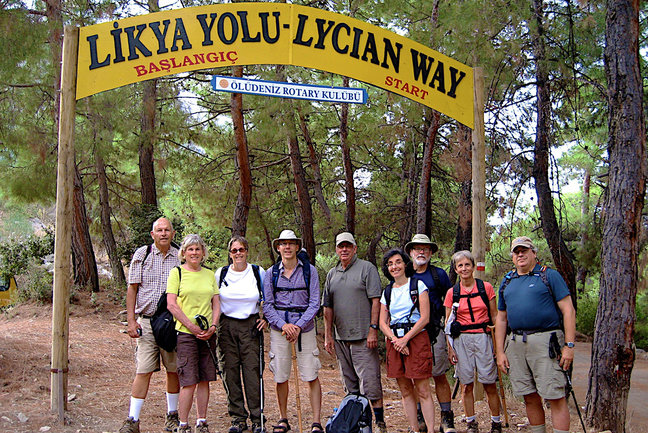
An expert-led cultural tour along the Lycian Way
Join this walking tour in Turkey
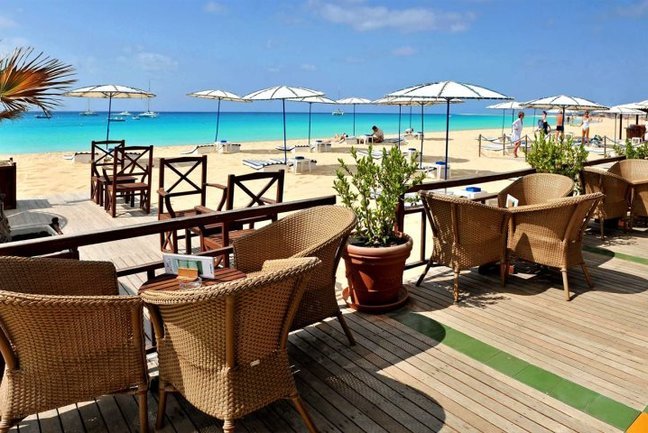
An immaculately kept, family-run hotel -customer favourite
https://www.capeverde.co.uk/hotel-morabeza
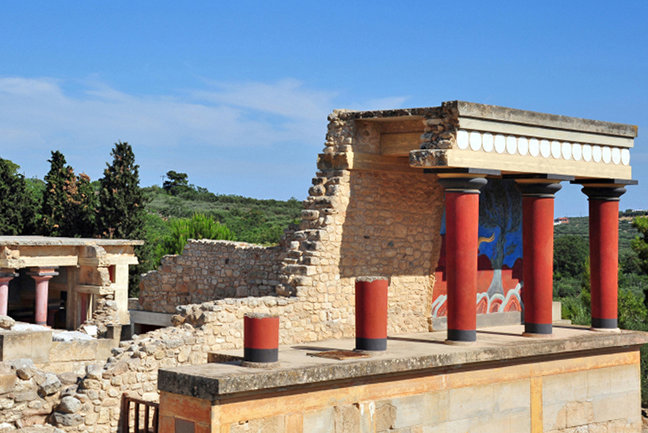
Exploring Crete
A spectacular expert-led tour of the legendary island of Crete
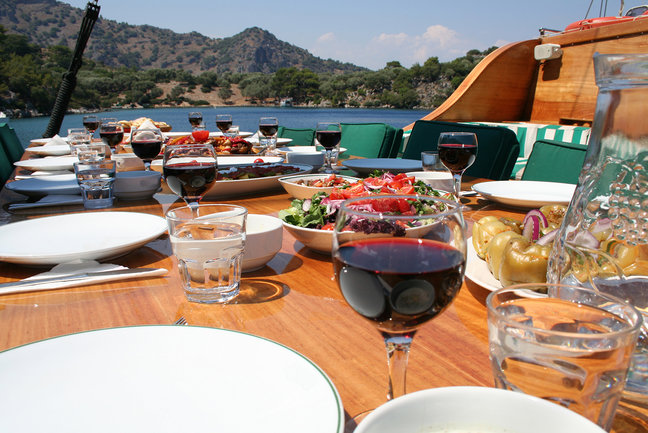
Join this Gastronomic Gulet Cruise in Turkey!
Explore Turkey's turquoise coast & discover its fantastic cuisine
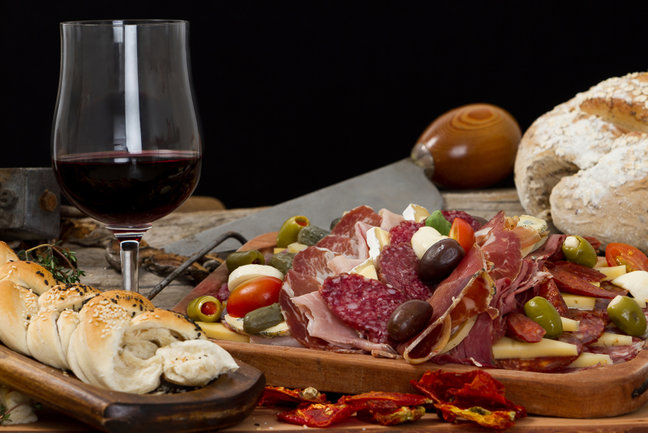
A Gastronomic tour of Sicily. Discover its fabulous cuisine.
Join this fabulous expert-led culinary & cultural tour of Sicily.
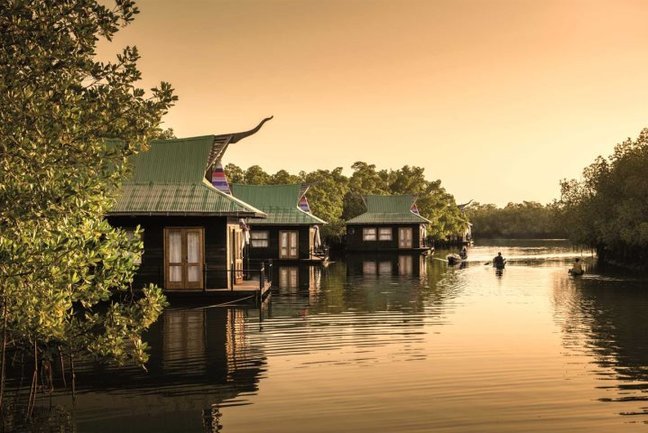
Barefoot Luxury - River Lodges in Gambia
https://www.gambia.co.uk/mandina-lodges
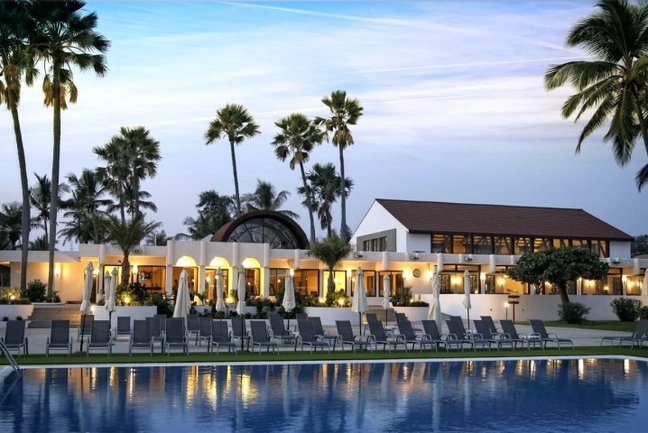
All inclusive 4 Grade wintersun
https://www.gambia.co.uk/sunbeach-hotel
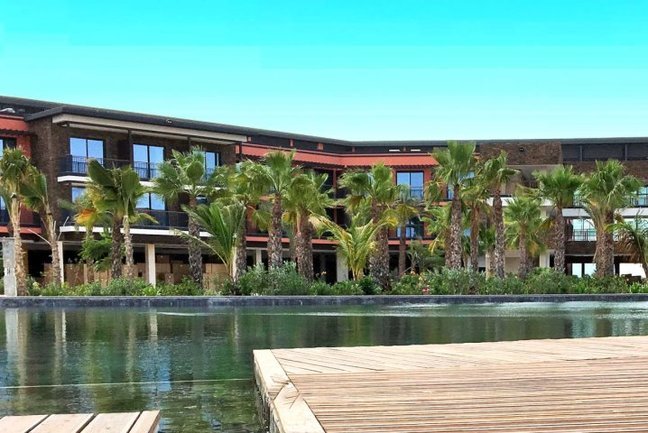
A beautifully designed hotel on the Island of Sal
https://www.capeverde.co.uk/hilton-cabo-verde-sal-resort?bt=packa

Golf in Wallonia Belgium
Explore Mons former EU Capital of Culture
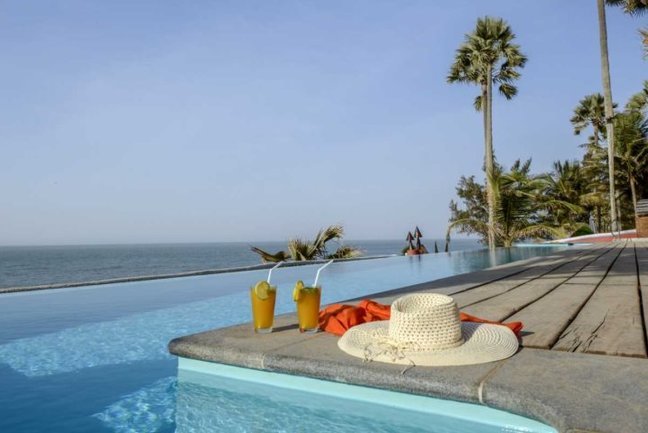
Luxury Boutique Ngala Lodge with renowned restaurant
Once you've stayed at Ngala, you wont settle for anything else
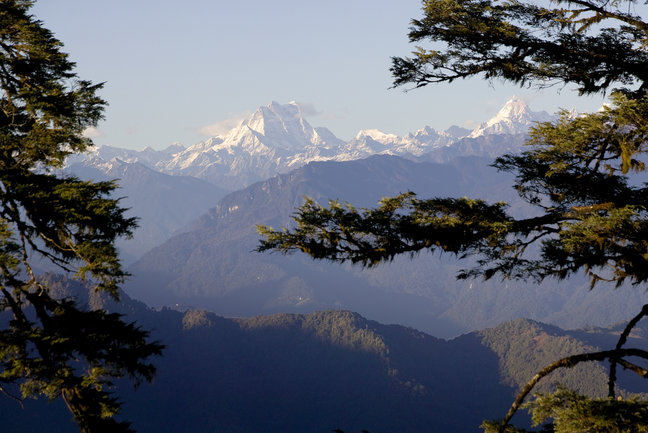
Essential Bhutan Experience
Bespoke Immersives holidays in Bhutan with ETG

Explore Rudyard Kipling's India
Bespoke Immersive holidays in India with ETG

Arguably the most striking beachfront hotel in The Gambia, C
https://www.gambia.co.uk/coco-ocean-resort-spa

The best of Mons & Waterloo
Visit Wallonia Southern Belgium
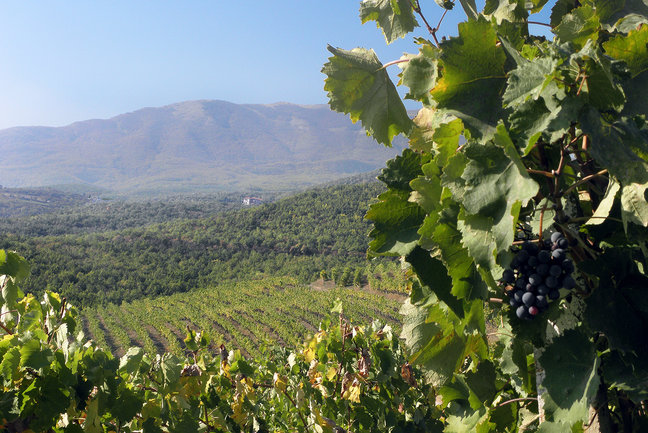
Discover the wonders of ancient Macedonia in Greece
Join this expert-led archaeological & cultural tour of Macedonia

Sri Lankan Family Adventure
Bespoke Immersive holidays in Sri Lanka from ETG
Special Offers
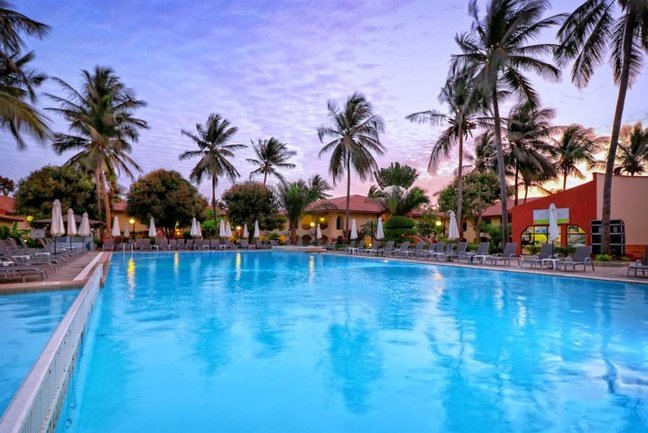
Escape to The Gambia with this fabulous late deal
Beachfront hotel on Cape Point Holiday
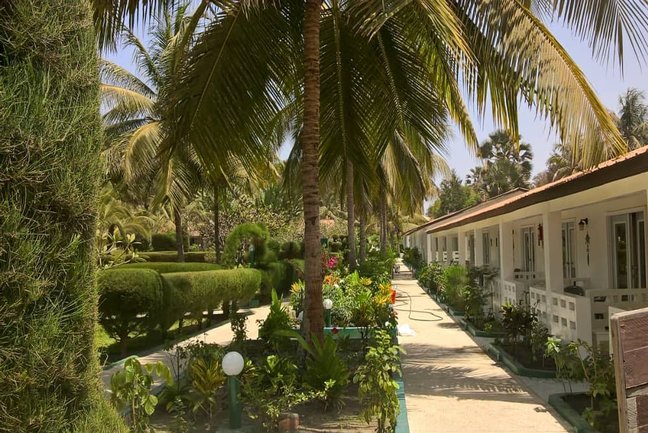
Great saving Wintersun
https://www.gambia.co.uk/holiday-beach-club
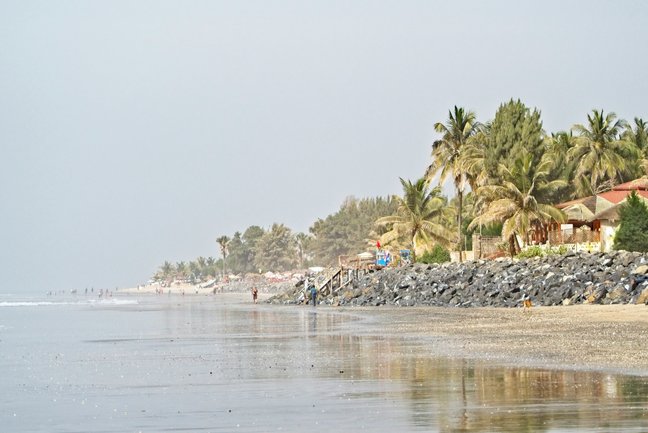
Late deal 7 nights from £659
https://www.gambia.co.uk/kombo-beach-hotel
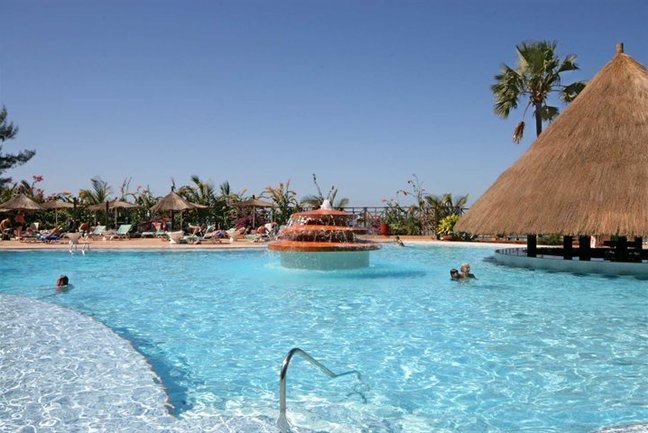
popular hotel situated in the resort of Kolol
https://www.gambia.co.uk/senegambia-beach-hotel
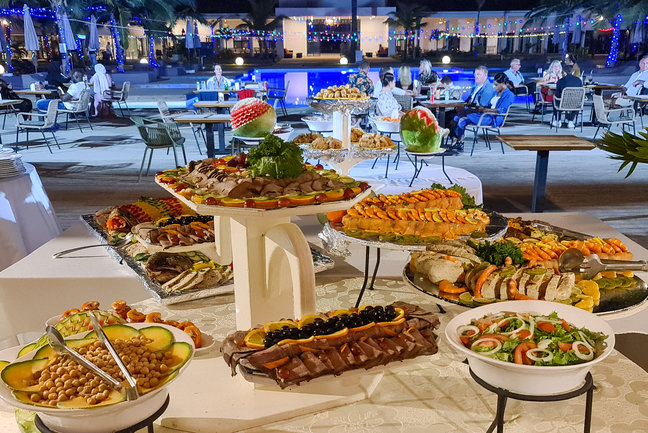
Adult only All inclusive Winter Sun
https://www.gambia.co.uk/tamala-beach-resort
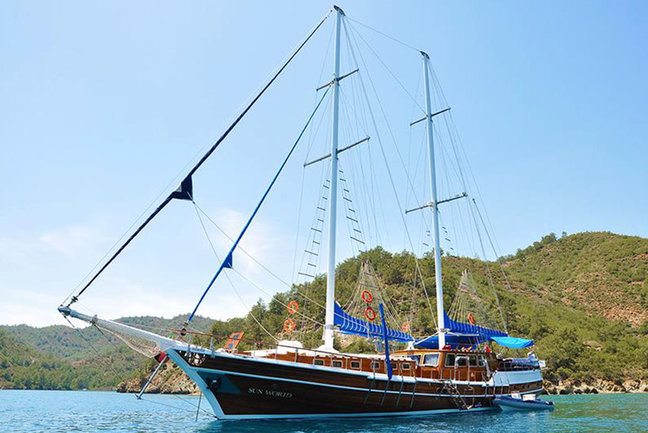
Discover the Dodecanese islands aboard an elegant gulet
Expert-led gulet cruise in the Greek islands
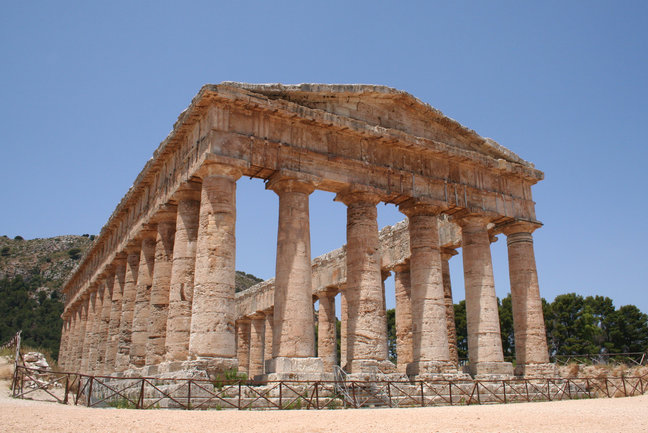
Exploring Sicily
A spectacular expert-led tour of the legendary island of Sicily
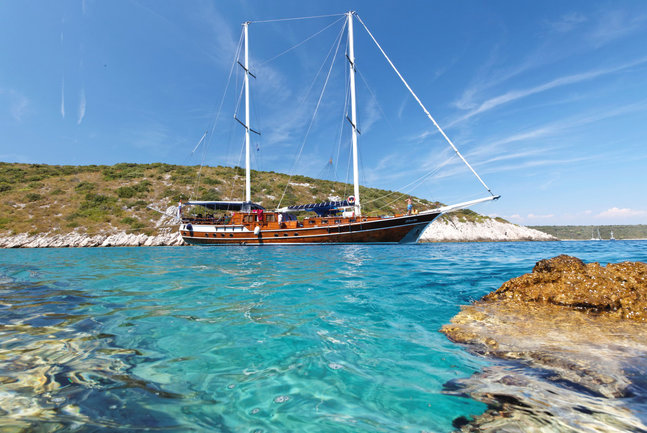
Gulet cruise in Croatia with AITO Tour Operator of the Year
Expert-led gulet cruise in Croatia
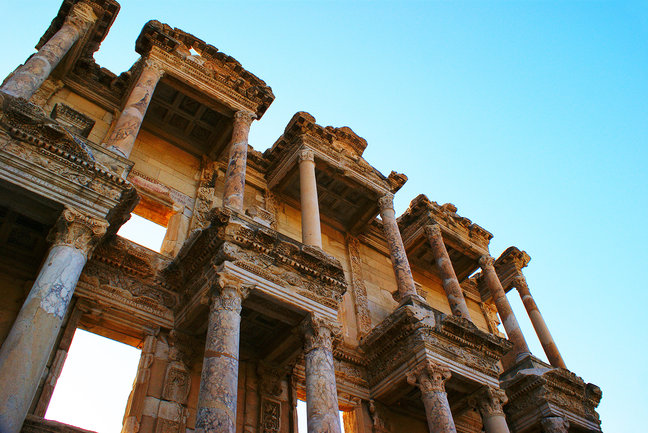
Gulet Cruising to Ephesus - Almost Full
An expert-led archaeological and historical adventure in Turkey
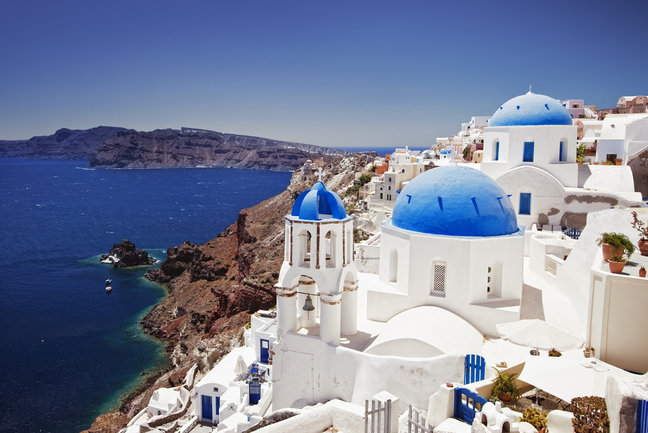
Expert-led gulet cruise in the Greek Islands
Join this trip with award-winning Peter Sommer Travels
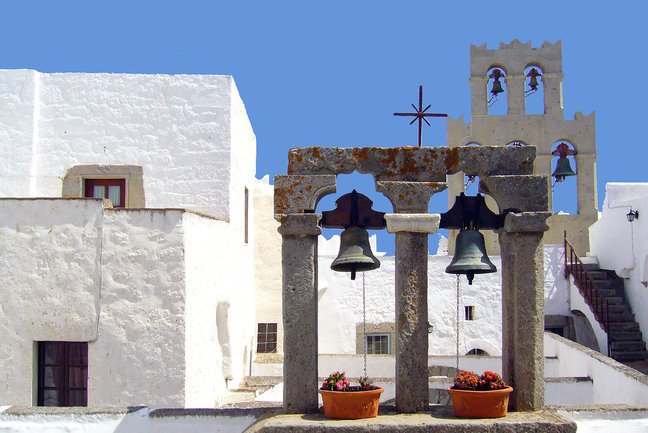
Last cabins available on Greek Islands gulet cruise
Join this expert-led trip with AITO's Tour Operator of the Year
Holiday Reviews

Byron was an excellent birding guide with detailed local knowledge and found us so much. Andy also helped a great deal. ... read more
Naturetrek specialises in tours focusing on wildlife and birds. Terrain can be difficult so the trips are graded - so you ... read more
naturetrek. 3rd holiday with them now. they keep you well informed and provide excellent wildlife holidays read more

The Difference Between Tour Operators & Travel Agents
Quite a common question for anyone not working in the travel industry is about the difference between a tour ...
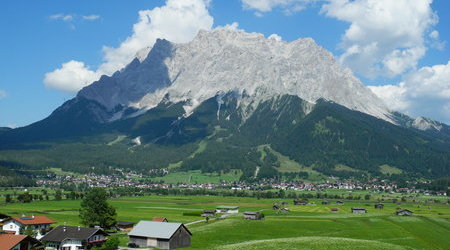
Where's Zugspitze?
A lesser-known mountain adventure is the subject of Ramble Worldwide's latest blog post as they take us on ...
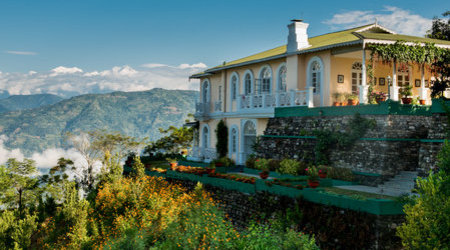
Discover India's Forgotten Corner
Rajasthan and Kerala tend to monopolise the attention of most first-time travellers to India – and with good ...
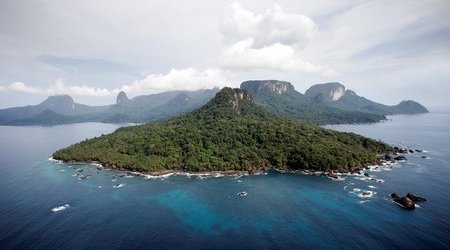
If You Haven’t Heard of São Tomé and Príncipe, It’s About Time
The team at Archipelago Choice take you through the deep, rich culture of São Tomé and Príncipe. Just off ...
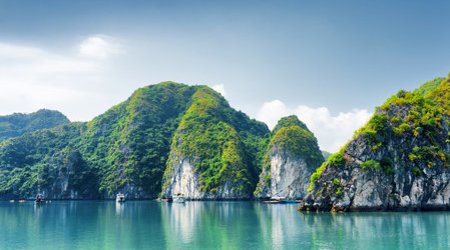
Tips for Your First Trip to Vietnam
Are you thinking of going to Vietnam? If so, here are a few top tips, and FAQ's, answered. How do I get a ...
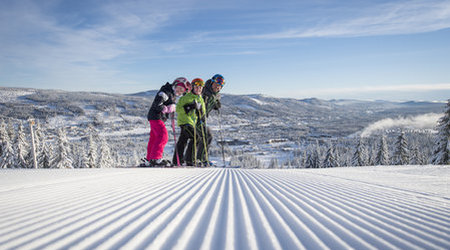
5 Reasons To Ski in Scandinavia
If you’re still unsure of the recent hype, the team at Scandinavian Travel would like to share their top ...
Please enter your username and password to logon to the member pages
By clicking the box above, you agree that a cookie will be placed in your browser to retain your login details Forgotten password?
- Skift Research
- Airline Weekly
- Skift Meetings
- Daily Lodging Report

Multi-Day Tour Operators 2021: Reshaping Supply Chains and Distribution
Executive summary, definition and core products, the tour operator value chain, digital marketing to become primary sales channel, rise of online booking platforms, the ongoing shake-up of supply chain roles, the new era of modernization and professionalization, covid-19 is driving new types of tours, the pandemic also accelerated many existing trip trends, collaboration and transparency across the industry, bankruptcies are coming, what will the new multi-day tour landscape look like as covid fades, related reports, report overview.
Perhaps no sector has been as badly hit by the pandemic as tour operators, given their intrinsic connection to cross-border travel as well as human interaction. Based on our research and discussions with over a dozen executives we see an industry on the precipice of major changes.
This report will focus on the global multi-day tour operator sector with a heavy emphasis on itinerary-based guided tours. We will also briefly touch upon packaged tour sales. Multi-day tours are one of the last truly offline spaces of the travel industry. But that isolation cannot last. This report will cover the structure of this complex and fragmented industry. We see an ecommerce revolution occurring in the next five years that will reshape the way the industry supplies and distributes its products.
We will also discuss the impact of COVID-19 on the industry and how we see the types of tours offered, and the operators themselves, evolving as a result.
What You'll Learn From This Report
- How the complex supply chain of the multi-day tour industry works and the different kinds of businesses and tours that exist within it.
- How digitalization is disrupting the industry and where the biggest new opportunities exists
- How tour operators have responded to the pandemic
- What we think the new multi-day tour landscape will look like as COVID-19 fades
Executives Interviewed
- Matt Berna, Managing Director, North America for Intrepid Travel
- Murray Decker, Chief Executive Officer of Tour Amigo
- Gavin Delaney, CEO and Co-Founder of TravelStride
- Tom Hale, Founder and President of Backroads
- Travis Pittman, CEO and Co-Founder of TourRadar
- Catherine Prather, President of the National Tour Association
- Massimo Prioreschi, CEO of MT Sobek
- James Thornton, Chief Executive Officer of Intrepid Travel
- Gavin Tollman, President of The Travel Corporation
- Enrique Velasco Jr., Chief Commercial Officer of Coltur Peru
- With special thanks to Jared Alster and Tom Buckley, Co-Founders of Dune7 for their background contributions to this report
From our vantage point today it’s easy to take for granted that people across the world would use their leisure time to travel. But tourism — traveling for the pure enjoyment of it rather than for trade or religion — is a relatively recent development in the grand scheme of things. Most date the birth of modern mass tourism to Thomas Cook’s first package tour in 1841.
But naturally a lot has changed since then. Today’s tour operators need to be constantly evolving to keep up with the changing face of modern travel, as Thomas Cook itself discovered the hard way — and that was before a global pandemic hit!
This report will focus on the global multi-day tour operator sector with a heavy emphasis on itinerary-based guided tours. We will also briefly touch upon packaged tour sales. Though smaller than the hotel or airline industry, anyone seeking to understand leisure travel overlooks tour operators at their own risk. Pre-COVID, 12% of U.S. leisure travelers booked a package tour and in the United Kingdom, 47% of household travel spending was on packages. In Southeast Asia, 60%+ of trips were packaged or semi-guided tours.
Perhaps no sector has been as badly hit by the COVID-19 pandemic as tour operators, given their intrinsic connection to cross-border travel and human interaction. Many operators are still seeing revenues down 80%+ even as other sectors like hotels and airlines are moving to a recovery. The pandemic changed the kind of tours that people want, driving them to seek the outdoors, small groups, and domestic trips.
Based on our research and discussions with over a dozen executives, we see an industry on the precipice of major changes. It is one of the last truly offline spaces of the travel industry, but that isolation cannot last. There is a need for new modern tools and digital distribution, which presents a massive opportunity for new tech startups in the space. We see an ecommerce revolution occurring in the next five years, similar to what short-term rentals experienced following the success of Airbnb. This disruption will be compounded by the profound damage inflicted by the pandemic
In a sense, we already have a bit of a roadmap based on the past trajectory of other travel businesses that moved offline to online. We expect to see the emergence of a few major online booking sites and a new class of intermediary tech vendors to handle online bookings, channel distribution, and inventory management. Eventually this will lead to conflicts over direct distribution, repeat guests, and rate parity.
We also believe that the pandemic will spur a winnowing of the ‘middle class’ of tour operators. A wave of bankruptcies and mergers is likely to come leading to consolidation in a handful of large players on one side and on the other side a long-tail of specialist operators that can niche down into their own unique offerings.
The Tour Operator Landscape
The multi-day tour industry is a big tent that incorporates a wide range of operators, suppliers, and distributors. Plus, at times it seems like every company in the space is running a slightly different business model.
Our first step towards untangling this web of interconnected tour companies is to put a basic definition in place.
Tour Operator : A tour operator is any company that sells two or more trip components together. At its most simple this could be a flight, hotel, or cruise sold together as a package. More complex tour operators bring together transportation and accommodation with local meals, activities, and guides.
There are three core products sold by tour operators: packaged travel, itinerary-based tours, and small ship & adventure cruises.
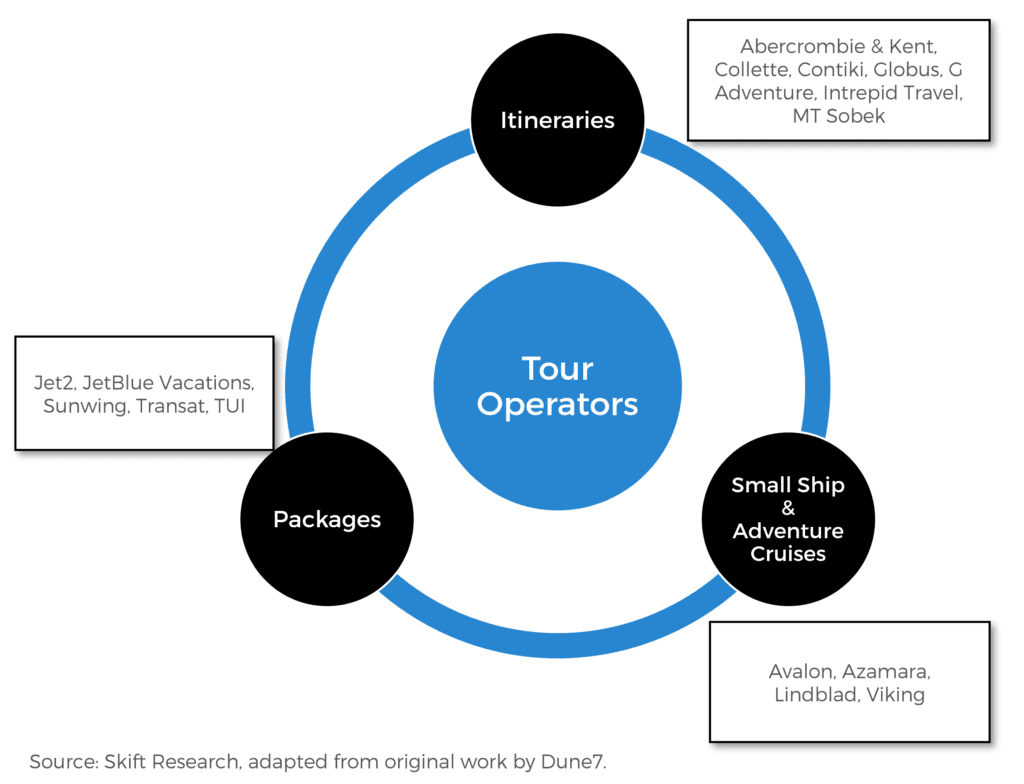

Small Ship, Adventure, and River Cruising
Small expedition ships and river cruises are often included as within the tour operator space. The same travel agents that sell land-based multi-tours frequently also offer specialized cruises. Major booking sites like TourRadar have a prominent and well-stocked river cruise section.
This space was traditionally dominated by specialists, like Azamara, Lindblad Expeditions, orViking River Cruises and they are some of the fastest growing businesses in the entire cruising sector. Arguably these smaller companies have as much, if not more, in common with a land-based tour operator than they do with the mega-ships of Carnival or Royal Caribbean. And to that point, we are now starting to see traditionally land-locked operators go to sea, with, for instance, Intrepid Travel now offers polar cruises and TUI owns several cruise ships.
Small ships do meet our definition of a tour operator as they bring together transportation, accommodation, activities and food into one package. Though in fact, if you stop and think about it, so does the entire cruise industry, regardless of ship size. In order to prevent this report becoming too big we will set aside all cruising — big and small — as its own topic to be covered in future research. The rest of this report will be focused on land-based multi-day tours.
Packaged Travel
Packaged travel offers the distilled essence of our original tour operator definition. These trips bring together two or more components of travel supply, usually a flight and a hotel, and offer the combination together as a single new product to the consumer. The main selling propositions for this kind of product is typically value for money, convenience, or unique supply. Packages are also very commonly sold as an upsell for travel suppliers.
Given that there is no itinerary design included, this type of product is most popular among those looking to ‘fly and flop.’ These guests are typically looking to spend their leisure time off in a hot location with a cold beverage. And they want to access that vacation as easily and cheaply as possible.
One of the main reasons why package tours can offer better pricing to a traveler than assembling the separate components of the trip themselves is because, from the point of view of a travel supplier, packagers operate as an opaque selling channel.
Take hotels as an example: in a package the customer is quoted a single price for the entire bundle – flight + hotel + car – so the traveler can’t pinpoint how much they are paying per room night. This means that hotels can offer discounted rates without violating rate parity and undercutting first-party pricing. Tour operators tend to move high volumes so hotels are incentivized to offer bulk pricing for their business. Bed banks and global distribution systems often act as intermediaries providing wholesale supply to tour packagers.
Convenience is another main driver of packaged tour sales. There is a large segment of consumers, especially in Europe, that don’t want the stress and confusion of booking all of their own travel arrangements. While those of us that have the most severe cases of the ‘travel bug’ may have turned booking travel into a hobby (perhaps many of you reading this), we can admit that this is possibly not the most fun part of a trip for an average vacationer.
Another reason why a traveler might pick a packaged tour operator is because they can offer exclusive supply. Perhaps there is a resort that the operator owns and therefore the only way to visit it is by booking via a package. One of the best examples of this is TUI owns or operates over 400 hotels to ensure it can control the guest experience and provide access to rooms in supply-constrained markets like Cape Verde. It also owns nearly a dozen cruise ships and several charter airlines. Jet2 also follows a similar model with its own in-house airline that complements its vacation packages as it can offer uniquely convenient airlift for its guests only.
Dynamic Packaging
One of the most exciting developments in the packaged tour space is dynamic packaging. This is a relatively new development in the packaged tour space driven by the growth of tech connectivity in the industry. The concept is that, rather than operators or agents manually pulling rates and building bundles by hand, algorithms automatically create package deals live during the guests’ shopping experience.
The next step for this market is the development of open platforms that plug into suppliers’ booking engines and allow dynamic packaging ‘as a service.’ For example Hotelbeds offers dynamic packaging via an API that could allow for this. Third-party platforms for bundling opens up a whole new world of plug-and-play upselling capabilities for travel suppliers that might not have traditionally considered a packaged tour product, although it also brings with it the potential for rate parity issues.
Airlines have long used packaged tours as an upsell to drive revenue and margin on the flight products they were already selling. These bundled upsells often accounted for a small slice of revenue. JetBlue in a 2018 investor day disclosed that its attach rate for JetBlue Vacation was just 1.5% of transactions. However these small percentages can add up to big dollars, like at LatAm which sold $22 million worth of tour packages in 2020, still less than 1% of group revenues. But the package revenue shares can go quite high, even at a traditional mainline carrier. Japan Airlines Group (JAL) — certainly not a discount packager like Jet2 — sold $485 million of packaged tours in 2021, accounting for ~10% of group revenue, according to IdeaWorks .
Most airlines, if they sell tours at all, operate closer to Jetblue with the business driving a low single-digit share of group revenues. But JAL and other exceptions prove just how high the numbers could potentially get. Many airlines see today’s low package numbers as a mere starting point from which to build significant ancillary revenue streams to complement their unbundled retail strategies. Dynamic packaging has made this far more feasible and now airlines of all types from AirAsia, Allegiant, and EasyJet to Emirates and American Airlines are selling tour packages.
In the past, standing up a packaged tour offering at an airline would require a lot of time-consuming negotiations with hotel and car rental suppliers and even after all of that work, supply might still be limited. Airlines are in the core business of selling flights and not negotiating hotel wholesale rate contracts. With dynamic packaging airlines have the ability to tap into B2B platforms that can build bundles around their routes with relatively low lift. Bedbanks, like Hotelbeds , GDSs, like Amadeus , and tech vendors, like Switchfly all now offer dynamic packaging tools. This means that in today’s fast evolving landscape, airlines can add new routes and immediately be selling dynamic packages around that destination on launch.
The development of dynamic packaging further blurs the line between a tour operator, like a TUI, and an online agent, like Expedia. If JetBlue (supplier), TUI (operator), and Expedia (OTA) can all sell the same flight plus hotel package, what is fundamentally the difference between these three companies?
We believe that online travel agencies like Expedia and Booking will be some of the biggest beneficiaries of the move towards dynamic packaging and the above blurring of industry lines. In a dynamic world, having the most possible permutations of trip choices is a key differentiator. And the OTAs sit in a sweet spot where they have strong pre-existing direct customer relationships while also having millions of hotel, flight, and car listings across the globe already live in their databases. When guests shop for a flight, the OTA can then offer them the upsell to add on a hotel room or car booking, all for one packaged rate. The discounted package price is calculated automatically on the fly based on the unique combination of travel choices selected by the shopper. The discount can come from specific wholesale rates pushed by the suppliers to the OTA or the booking site might just choose to algorithmically reduce its commission margin to encourage an upsell to a higher ticket purchase. They can also resell their inventory and technology as white-label dynamic packaging tools to other agents, hotels, and airlines. Both Booking Holdings and Expedia as well as smaller OTA players like lastminute.com have all been running experiments around the best way to sell tour packages. Expect to see more developments in this space.
Itinerary-Based Tours
Itinerary-based tours are, arguably, the heart of the tour operator industry. These tours go beyond simply bundling component travel products, adding on top of that core package a layer of local expertise and itinerary design. These tour operators will be the focus of the rest of this report.
Price is not often the main selling point here. Rather, the convenience of not having to plan, the assistance of a guide, or the uniqueness of an itinerary is the main selling point. There is quite a lot of variety within products offered in this space.
There are three main variables that we can use to define the main types of itinerary-based tour products:
- Fixed-Date Departures vs. Custom: Fixed date tours are offered with a pre-scheduled departure date and a set itinerary. Travelers buy these pre-built itineraries off the shelf. In contrast, custom tours are built to suit each individual guest with a unique schedule and departure date.
- Guided vs. Self-Guided: Though the classic image of a tour includes a guide leading a group, this does not always have to be the case. Self-guided tours are growing in popularity. In this case, the traveler buys a travel package that can include local connections, activities, meals, and suggested sights, but no in-person guide to contextualize the destination.
- Group vs. Individual: This has more to do with the buying behavior of the guest than the actual itinerary on offer. In group travel, the entire tour is booked up by a single organization, perhaps a school group, work retreat, or a large family. On the other hand, individuals traveling book a single slot as part of a larger overall planned departure that combines many other individuals or a small group of travelers that don’t know each other.
We can mix and match these different variables, offering for instance a guided group fixed date tour or an individual self-guided custom tour.
In addition to the main products on offer, there are two primary layers of operators in the itinerary-based space. One is based on the source market that the travelers buying the tour are departing from, and the other based on the destination market that the tour is taking place in.
- Outbound Tour Operators: These tour operators service international travelers. They typically focus on a single origin market but often service multiple overseas destinations. Outbounds specialize in the market that travelers purchasing a tour are departing from and can provide native language marketing, sales, and customer support. They also have the cultural context to understand what kind of itineraries may appeal in their home market. Outbound businesses may operate their own in-destination trips or outsource the local logistics to a destination management company. An example would be a UK based tour company that offers British travelers a variety of trips across Asia and continental Europe.
- Destination Management Companies: Also known as inbound tour operators or receiving tour operators. These operators receive inbound international travelers. They typically focus on a single destination market but often service travelers from multiple overseas origins. By specializing in a single destination, they have the local know-how and logistics to ‘make the trains run on time.’ They can sometimes use their local connections to source unique experiences. DMCs usually contract with an outbound tour operator but increasingly may sell direct to the overseas consumer. An example would be a local Peruvian tour operator that specializes in running Machu Picchu treks for guests coming from many different outbound operators and nations.
The line between outbound and inbound operators has always been blurry and it is only getting hazier. The core distinction we will be making when referring to outbound operators vs. DMCs is the difference between retail-specialists focused on the source market and logistic-specialists focused on the destination.
These terms originate from the cross-border market but, especially as local tourism boomed during the pandemic, have a place in domestic markets as well. While they may not technically be ‘outbound’ operators when within the same country, there can still often be a separation between the retail tour operators and their domestic DMC partners or subsidiaries (though one could even argue New York City might as well be an outbound foreign market from the perspective of a Utah river guide).
Illustrative Example of the difference and connections between Outbound Tour Operators and Destination Management Companies.
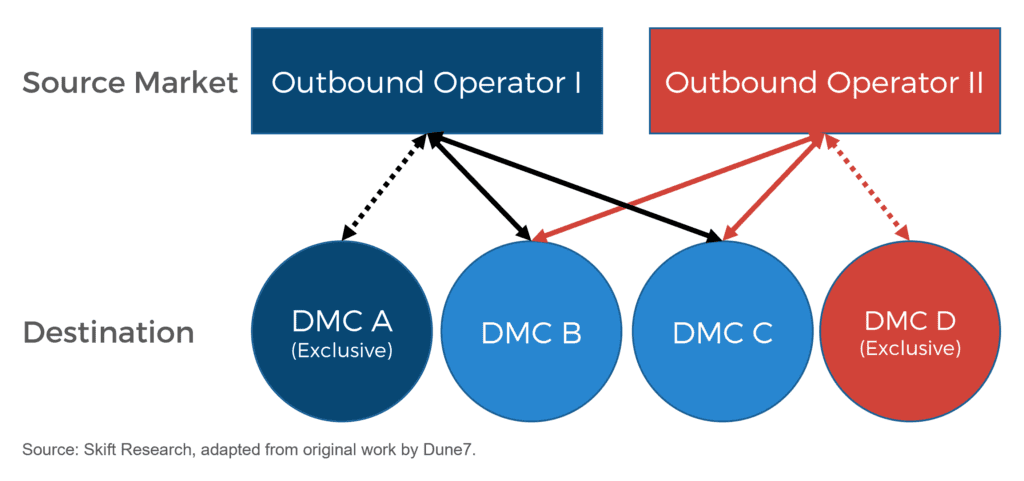
With the baseline definitions and products understood, let’s examine the lifecycle of how a tour is created and comes to market in the land-based tour operator space.
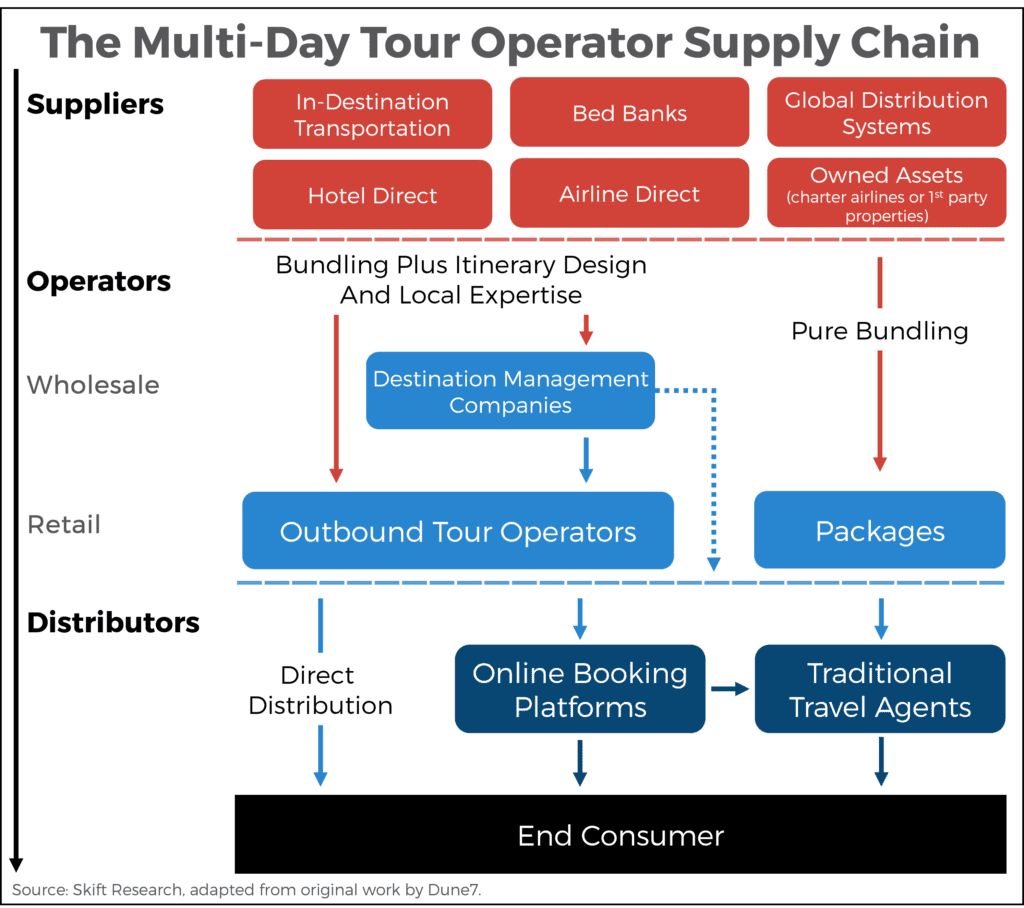
Our model of the tour operator chain has three layers of value add. It starts with the supply of core travel products like hotels, flights, trains, and cars. These ‘raw materials’ of the tour might come from direct contracting with an airline or via a reseller like a bed bank. Some fully integrated tour operators even own their own charter airline or resort properties.
The next layer is the tour operator itself. “The tour operator is the manufacturer,” says Catherine Prather, President of the National Tour Association. Unlike a hotel or airline that is fundamentally anchored to a physical asset, tour operators sell a value-added travel service not tied to a single tangible product. By that we mean that tour companies ‘assemble’ unique trips by taking building blocks from other travel suppliers and adding an additional layer of intangible value-add. That value-add might be local expertise, cheap bundled pricing, or peace of mind. This transforms the raw materials into a more valuable new product which they can resell into the marketplace.
We distinguish here between tour packagers that are doing pure bundling and itinerary-based tours where an additional layer of in-destination curation and expertise is used in the ‘manufacturing’ process. A company like TUI is still a multi-day tour operator at this tier. It ‘manufactures’ its own tour products and retails them through first-party channels and also re-sells through agents and other distribution channels. But the tour products it offers are mainly a bundling of different supply components. In contrast, a G Adventures both bundles the supply components and adds an additional design component by planning daily activities and arranging for local guides.
There is also the opportunity in this layer for wholesalers and retailers. Specialist DMCs often design local tours that can be resold to larger retail travel agencies that can tap into their local market of outbound travelers.
The final layer is that of distribution. There are three primary channels. First is the direct channel driven by in-house sales and marketing efforts. Then there are the two major intermediaries in the space, online booking sites, which operate on both commission and advertising models, and travel agents. It should be noted that tours are one of the last great bastions of traditional travel agents (along with business travel). A very significant volume of tour products is distributed by the large travel consortia and even, in some countries, by brick-and-mortar retailers. This is because tours are one of the most complex travel products, a result of the above ‘manufacturing’ process, making a human intermediary much more valuable.
A hotel room might have a handful of core attributes (star rating, price, location, room type) and several more secondary ones (Wi-Fi, pool, view, floor height). But even the most basic tour can have dozens or more key attributes (departure date, size of group, length of trip, itinerary variations, level of physical activity, type of accommodation, age of participants, etc.). This creates difficulty to code for tours in the back end, as well as for consumers to shop and compare multi-day tours. This has made it doubly hard for online booking sites to take off in the space; however, these challenges are slowly but surely being overcome and digital platforms are growing in prominence as distributors of tours.
We understand that we have tried to simplify a very complex space and so there may be many nits to pick with this diagram. But we think that these core mental models of three main tour products (packages, itineraries, and cruises) sold via layers of value (supply, operation, and distribution) is a useful way to help decipher the tangle of different operators in this industry.
A lot of the confusion in the space seems to stem from the many different permutations of how vertically integrated an organization chooses to be and what permutation of products they choose to sell. But by building this mental model of the industry we can better see past the superficial differences of each specific company. A lot of the variation we see across tour companies is often reflective of different choices about what parts of the value chain to vertically integrate and what products to sell. But within each specific part of the value chain in isolation, business models are often more similar than they may first appear.
For example, tour operators that run their own in-destination programs vs. ones that outsource to a DMC are not two fundamentally different types of tour companies but are instead making different decisions about how vertically integrated they want their organizations to be. Or a travel agent that sells tour packages is best thought of as vertical integration between the ‘manufacturing’ stage of packaging process and a distribution channel, rather than as a wholly separate kind of company from a tour operator with a large first-party salesforce.
Technology Shakes Up The Multi-Day Tour Industry
It is clear from our research that a wave of technological change is washing over tour operators as we write. Tours are one of the last major travel industry categories still heavily built off analog tools and manual processes. Catalogs and phone calls are frequently a part of the tour sales cycle.
Research from the Adventure Travel Trade Association (ATTA) suggests that just 8% of bookings came via online travel agents. And that more than two-thirds of bookings came from some form of offline channel. Though this was just a small sample and only representative of a niche type of tour operator, it speaks to just how small online distribution platforms are in this space.
Travel has attracted significant investor attention — nearly $30 billion of funding over the last five years — much of it focused on the digital transformation of the industry. Online platforms, which started in just airlines and hotels, have pushed into nearly every travel market. Nowadays practically every sub-sector from short-term rentals and business travel to day tours and packaged tours has either a major public company or a “unicorn” private startup valued at more than $1B, oftentimes both. All that is except for multi-day tours.
Tours and in-destination activities have actually been one of the fastest growing categories of travel investment, raising nearly $900 million in 2019, but almost all of these dollars seem to focus on single-day, rather than multi-day tours. Three of the largest startups in multi-days tours — Evaneos, Tourland, and TourRadar, have collectively raised under $300 million in capital while activity OTA Klook has raised $720 million by itself.
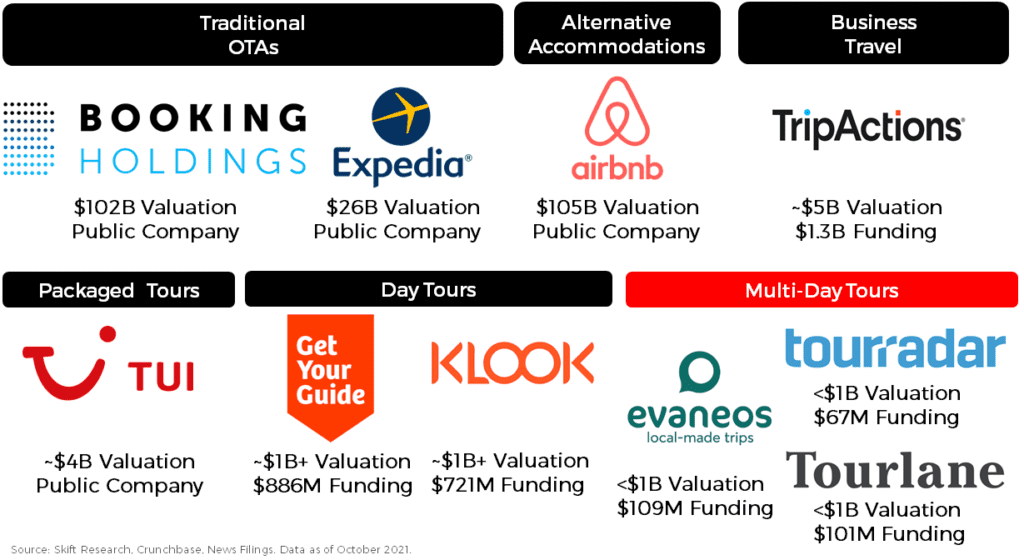
Part of this is the challenge of marketing complex tours online as well as resistance from incumbents content with the old ways of doing business. But changing expectations among employees, supplies, and customers, accelerated by COVID-19, are driving digital innovation to the fore in the sector.
This digital ‘splash’ will have ripple effects up and down the entire tour value chain, affecting everything from the smallest on-the-ground guide to the largest corporation. Gavin Tollman, President of The Travel Corporation, one of the largest tour operators in the world, believes that, “digital has really been one of the greatest evolutionary changes during [the pandemic] for us.” And being the last major travel sector to digitize does have a silver lining: by drawing on lessons from other sectors, we have a pretty good road map for how the industry may be transformed.
As with hotels and airlines, digital marketing will only continue to grow in importance to the industry. Naturally, this means that search engine marketing budgets will have to grow.
This is especially true in the U.S. market. Matt Berna, Managing Director, North America for Intrepid Travel, explained that, “[in America] We spend the lion’s share, easily 80% of our budget, on direct digital marketing strategies.” Although Berna caveats that in other markets, like Australia, travel agents and retail storefronts remain key marketing tools, that a large tour operator like Intrepid is so heavily invested in digital marketing should be a sign of the times.
But the rise of digital marketing goes beyond performance marketing. For instance, Search engine optimization is arguably just as important and when done right is not cheap either. “We’ve done a lot with SEO,” says Berna, “building a lot of new content, writing content, building out our pages and website.”
Digital marketing also involves building brand recognition at the top of a sales funnel moving online, with brand advertising shifting to platforms like YouTube and ‘word of mouth’ being spread on social media. In fact, Gavin Delaney, CEO and cofounder of online tour site Travelstride told us that 90%+ of customers start their tour research online.
Speaking to the power of social media, Tollman told us, “if you said to me, what has been one of our greatest success stories in the last year? It has been the use of social channels to tell our stories in a robust way that people can look and see. When the world was shut down and we were still operating trips, how powerful it was to show people that they could still go and show them what we were actually doing.”
Directly linked to the growth in digital marketing techniques is the rise of online booking platforms for multi-day tours. That’s primarily startup websites like TourRadar, Tourlane, Evaneos, and TravelStride. Today, these come in two flavors: commission-based agents (e.g. TourRadar) and advertising-based listing sites (e.g. TravelStride). There are still few true metasearch sites that search other online booking sites due to complexities of itineraries in the space.
Complex itineraries make it difficult to convert online intent to online bookings and Travelstride’s Delaney says that two-thirds of the industry still ends up being booked over the phone or via another direct channel through an operator or agent. “One thing to keep in mind,” he explains, is that “a hotel and a flight, they have five key data points… a departure date, an arrival date, a return flight, a price, a seat type, right?” And while alternative accommodations may expand that to 10 data points, Delaney points out that, “In a multi-day tour, typically, we have 125 data elements… does day three include breakfast? What are you doing in the afternoon of day four? What’s the average physical level? How much walking is there? Is this appropriate for an age group? … [Multi-day tours are] a step function, more complex in terms of how you organize that information to make it useful for travelers to search and feel confident enough to book.”
Adding to the difficulty of driving online sales is that these are expensive bookings, the average transaction at TourRadar is $2,500. But Travis Pittman, CEO and cofounder of the online booking site says that it regularly takes “bookings up to $10,000, $20,000.” In contrast the average transaction on Airbnb is ~$400.
Despite these challenges, online booking sites are making strong headway. We note that large online travel transactions are becoming increasingly common. To continue the previous example, despite its low overall average transaction size, Airbnb’s fastest growing category is long-term stays of 28+ days which can easily run up to $2,000 – $3,000 ticket sizes, all sold online.
And as aggregators of both tour supply and online demand, multi-day tour OTAs are uniquely positioned to win in a digital marketing heavy environment. We believe that the industry will inevitably close the gap between the 90% of travelers that start their searches online versus the third of travelers that end up completing this process by booking online.
For starters, consumers are increasingly coming to trust these online platforms. To that end TourRadar’s Pittman highlighted that, “a key part of TourRadar has always been reviews… that’s how we began really, and that’s stayed throughout.” Those reviews do more than just establish credibility with guests, they also help from a search engine optimization standpoint.
Reviews paired with the wide range of tour supply on the platform, means that an online booking site will probably be a highly ranked organic result for high intent tour searches. This also drives a “billboard effect” where online users that are “passing by” while searching for travel inspiration repeatedly come across the same few multi-day tour aggregator and review sites.
The guest starts by searching for a tour in Peru but also considers one in Columbia, and ultimately shifts focus to a Costa Rican trip. The destination specific brands will change each time, but TourRadar, TravelStride, and others will keep popping up. This familiarity drives trust in the platforms and makes users more likely to eventually book via an online intermediary, even if not for the destination they were originally searching for.
These platforms also have an advantage in online distribution by means of the wide range of supply that they aggregate. This comprehensive supply lets them drive repeat customers who want to explore a variety of different tours and destinations. An Argentinian tour specialist will struggle to drive guest loyalty because as Delaney points out, “even if you have the best possible trip, most people won’t go back to Argentina twice in a lifetime.”
It’s more than that, customers can be quite picky about even simple things like departure dates. Says Delaney, “the vast majority [of tour customers], even when they have a great time with that tour operator, … It’s just like, oh, I really liked Intrepid, but their itinerary dates don’t quite match up and G Adventures has a very similar one but their dates … match up with what I want better.” This mercenary behavior plays into the hands of online booking sites and other aggregators like travel agents who have cross-brand supply and allow for comparison shopping across dates and prices for similar itineraries.
This means that all else equal, the same exact customer probably has a higher lifetime value to an online booking site than they do to a regional tour operator. Pittman emphasized that, “CRM [customer relationship management] and bringing customers back is an extremely important part of this journey.” Accordingly, TourRadar and similar sites can ‘afford’ to outbid regional tour operators in performance marketing because even though they may end up paying more in dollar terms, they could still well be earning the same or an even better ROI on their ad dollars than what the regional specialist was targeting.
The final piece of the puzzle comes from the focus and size of an online travel agency. As we have seen with flight and accommodation OTAs, these booking sites eventually grow to have larger marketing budgets than most individual tour operators can hope to muster. This, paired with the above ROI efficiencies, let online booking sites win more online performance marketing search auctions, more consistently than other operators, driving traffic.
All of this means that if, as we believe, the amount of multi-day tours being booked online grows, then the relative importance of these OTAs is also likely to grow.
In our previous section on the tour operator value chain, we discussed the difference between local wholesale tour operators and outbound retail tour operators. In the past these two businesses had a mutually beneficial relationship. Running dozens of local operations was impractical for the retailer while for a local operator, in Morocco say, it would have been unthinkable to directly market tours abroad in multiple countries.
But the accessibility of online marketing and digital distributors has upended this relationship. It has opened a whole new world of opportunities that were never before possible while also bringing with it a whole new slew of challenges. “We’re seeing DMCs also work with us now,” says TourRadar’s Pittman. “… They’re [DMCs] seeing the opportunity to go direct to market. So they’re not just reliant on these bigger operators to get to [market]”.
That local DMC in Morocco can now list its tours on an online booking site and collect bookings from across the globe. Though it will have to pay a commission – likely 15% to 25% – a DMC can now cut out the intermediary and bring those retail margins in-house. All of this without a direct booking engine! If the Moroccan DMC chooses to invest in an English-language webpage and a modest AdWords budget it could be in the direct tour business across the U.S., Canada, UK, and Australia almost overnight.
“What’s happening is that the producer and the consumer are getting closer and closer and closer,” says Enrique Velasco Jr., Chief Commercial Officer of Coltur Peru, a local DMC. “They [the producer and consumer] can start speaking to each other. Whereas before, they were thousands of miles apart, there was no communication between them.”
Wholesalers are now competing directly against their retail partners. And to make matters more confusing, many of these retail tour operators also distribute through travel agents and OTAs. That means that the same exact tour could well be marketed to the consumer in four different places (direct via wholesaler, direct via retailer, indirect via OTA, and indirect via travel agent).
Adding in another layer of complexity, Pittman told Skift that TourRadar plans to launch a new platform for redistribution by the end of the year that will, “basically allow any third party to distribute the inventory that we have… the GDS of multi-day [tours].” The ability to push the same tours through as many distribution channels as possible will never have been easier.
On the one hand, this breadth of channels means more shots on goal and more chances for the right guest to find the right tour. As TTC’s Tollman puts it, “Consumers are going to buy travel where they want to buy travel. And we will ensure that we are in those places for them.”
But on the other hand, imagine a physical store putting the same exact products right next to each other on the shelf, just with slightly modified packaging. Each variation with different pricing and margins. That would never fly in the real world, the consumer would optimize for lowest price and the manufacturer for best margin until only one product remained.
The main reason it works with tours is because of confusion in the space and unsophisticated customers that prevent true comparison shopping. Travel agent clients today are unlikely to be comparison shopping with online travel agents or direct channels. And guests are often afraid to book complex and expensive itineraries online or with a party they don’t have a pre-existing relationship with.
Compounding this, many tour operators – both wholesale and retail – are heavily reliant on third-party sales. Though they see the potential of direct, it is currently too small a part of their business to be self-sufficient and they are afraid that too sharp a pivot towards direct will alienate distributors and result in a net overall decline in sales.
But we would argue that fear and opacity are not a strong foundation to build a business on. The clear trend in online shopping is towards more transparency across products and prices and for the rising generation of customers to be more comfortable with making large ticket purchases online. Plus, over time, tour operators will become more confident in the size and stability of their direct channels and more willing to confront distributors over commissions.
We think that the blurring of industry lines will drive several reactions. It will cause distributors to delineate their value add more clearly, with travel agents for instance retrenching into high-touch luxury service with many add-ons and complex arrangements. Wholesalers will be able to compete on price as direct-to-consumer wholesale clubs like Costco do today. And retailers will be driven to vertically integrate so that they can offer more destinations, in turn driving repeat guests, and potentially also create more exclusive supply arrangements so that they cannot be undercut or resold by other players.
James Thornton of Intrepid told us that, “I think we’ll increasingly be more vertically integrated as an organization. In 80% of the cases it’s our DMCs operating the products that we sell [and] you’ll see us potentially move into other aspects of verticals. It might be more accommodation, it might be having exclusivity of certain routes or departures. You might see us have more small ships, for example.”
Let’s face it, most founders of a tour operator didn’t jump into the business out of their love for programming. They did it for the love of travel! But with the world going the digital direction we describe above, the need to modernize and professionalize many tour operators, especially smaller ones, is becoming increasingly urgent.
Many operators still keep the details of their tours logged on excel or even pen and paper. And we know of operators and travel agents that need to make multiple phone calls to confirm a booking. According to Tourism Research Australia, 88% of bookings are still made manually through email booking requests and offline methods. A survey by ATTA found that just 50% of operators they surveyed have an online reservation system that takes credit cards. This won’t fly in the coming era of tour operators.
In order to drive effective direct to consumer capabilities, tour operators will need to develop a full technology stack. This includes responsive websites with SEO in mind, booking engines to capture sales, customer relationship management software to track guest inquiries and bookings and MarTech tools for performance advertising, retargeting, and email marketing, among other techniques.
James Thornton told Skift that Intrepid Travel wants to have “more focus on customer experience on the website. [We are] trying to improve the overall digital experience both at the point where people come into the brand and transact with us, but then also when they come on the trip more of the documentation being served up in a digital format, the feedback loops being in a digital format. And that just helps us as an organization be able to react more real-time than previously we would.”
Shockingly to us, Intrepid Travel only installed its first CRM system just three years ago. This is a standard sales and marketing tool for major corporations and Intrepid’s late adoption of this software speaks broadly to the industry’s need to modernize its tech stacks.
We should note that Intrepid still managed to attract 460,000 customers a year and a 25% repeat rate without CRM software. Pretty good. But it could be better, and looked at from a glass half full perspective there is a huge amount of untapped potential ahead for Intrepid to grow into as it modernizes its sales operations.
Even though Massimo Prioreschi, CEO of MT Sobek, a boutique mountaineering and outdoor adventure company, runs a smaller business than Thornton, he too has been investing in new technology. “In the last 18 months we’ve revamped our reservation system, phone system, CRM, and guest portal” he says. “This time of fallow, where there weren’t guests traveling”, Prioreschi explains, “[was an] opportunity to upgrade our technology. And so I think in five years, our guests will feel this ease of dealing with us.”
Above these core investments, a particularly exciting tech development we heard about came from The Travel Corporation, which “started using robots for all yield management,” according to its President Tollman. “We have dynamic pricing on all of our trips,” he explained. “And what that has done for us is … if costs are added to [a tour], we can adjust them dynamically as we move. So we are not stuck with flat pricing, which is one of the most high-risk features of the old way that tour operators used to work.”
This kind of revenue management is industry standard in the airline and seeing growing adoption across hotels. Based on this cross-industry trend, while TTC may be an early adopter, we expect more tour operators to adopt similar pricing tech.
And all of this is just on the direct-to-consumer side.
The technology for business-to-business (B2B) distribution is evolving as well. “Historically it was PDF and Excel files,” Berna explains. “[Peak DMC would] get a quote and then they’d send it to an Intrepid salesperson, who would make it look good and send it to the client.” That approach won’t fly anymore. Berna says that, “technology is going to improve a lot … [to allow us to] provide quicker quotes, more accurate quotes, better looking quotes so that DMC can work directly with those tour operators.”
Tour operators aren’t exempt either as they have distribution partners of their own – online and offline travel agents – that will be demanding modern booking capabilities. For instance, Tollman told us that The Travel Corporation is, “evolving our APIs to expand and let agents actually get even more content, and more content that’s relevant. Not just dates and rates, but all robust content there too.” Interestingly, he sees potential for APIs to expand the company’s distribution reach even outside the bounds of traditional channels, teasing that “We are also looking at a number of distribution channels, which typically have never sold multi-day tours.”
And although the largest operators in the world are starting to evolve, the reality is that most small and medium sized tour companies lag significantly behind. Here’s a striking fact: Murray Decker, the CEO of multi-day tech vendor Tour Amigo, told us that, “of all the operators we’ve had discussions with, about 95% of them actually don’t have a dedicated multi-day tour [backend] system, or are using a mix of multiple systems that are designed for other travel business (day tours, activities, etc).”
If there is to be a post-COVID gold rush in multi-day tours then these back-end vendors, like Tour Amigo, are selling the pick-axes. Inventory management, content management, and booking engines are part of a standard digital retail tech stack in airlines, hotels, short-term rentals, and most recently day tours. Not only do they allow for operators to keep up with evolving distribution channels, but there is a major book-keeping and business management benefit as well.
Digitizing inventory allows for more advanced sales analytics, quicker account reconciliation, fewer back-end staff, and reduced errors. Murray estimates that at large travel agencies and tour operators the error budget due to manual loading mistakes can run into the millions of dollars.
The path forward is clear to us: DMCs and tour operators alike will need to buy or develop new back-end systems that can deliver live pricing and availability. Intrepid’s Matt Berna reflects that, “I used to talk to product managers and ops directors about how great our products were. Now I talk to data science engineers.”
These backend systems and APIs are increasingly table stakes to participate in the current digital tour operator landscape. But they don’t come cheap and an unfortunate reality is that, especially in the wake of COVID-19, many operators will not have the cash on hand to upgrade these systems, shutting them out of modern tour distribution. We see this creating a class of have and have nots, especially in the more commoditized product offerings. This will drive some to sell out to more sophisticated tech platforms or simply to fall behind and go out of business.
The Impact of COVID-19 on the Multi-Day Tour Sector
Up until this point in the report we have discussed the structure of the industry and how long-term changes in technology are causing tour operator business strategies to evolve. In this section we will discuss the more immediate changes caused by COVID-19. This includes both new trends in the actual tour products being offered, as well as how some industry-wide practices and standards are evolving in the wake of the pandemic.
“We are going through a seismic shift in our world,” says Gavin Tollman, “the fact is we’ve entered just an entire new world.” COVID-19 has caused a dramatic shift in what kind of tours that travelers take. Some of it is due to changing preferences, such a desire for more cleanliness and safety, while other changes are due to government orders such as the closing of borders. Regardless of the reason, tour operators have responded by creating new types of tours for the pandemic era.
Rise in Domestic Tourism
The biggest new trend to emerge from the pandemic is the new emphasis on domestic tourism. At Intrepid Travel, Berna tells us that, “before COVID, about 60% of our customers worldwide came from Australia. … It’s flipped now. The US is our biggest booking market for Intrepid worldwide… 50% now of all travelers are American.”
Tollman of The Travel Corporation concurs. “Our domestic US travel brands [are doing] unbelievably well. Our domestic Australia brands, pre their last shutdown, [were also] unbelievably well… One is really beginning to see whether it’s in South Africa, the U.S., Australia, or the UK, domestic first, near-destination second, and international third.”
Focus on Sustainability
The other major new shift has been towards a more thoughtful understanding of travel’s impact on ourselves and the world around us. “If you said, what is fundamentally changed,” Tollman asks, “it’s going to be sustainability.” His family of tour brands are making significant shifts to be more respectful of the communities they visit and have pledged to be carbon neutral by 2022.
James Thornton, the CEO of Intrepid Travel was emphatic about this point. “Increasingly people want to be purchasing and working for and buying from companies that are truly sustainable, not companies that say that they’re sustainable, but companies that really are and have the independent accreditations to back that up,” he explained. Intrepid Travel is the world’s largest certified travel B-Corp and has been carbon neutral since 2010.
This is not just a COVID shift but a generational one, according to Thornton. “Increasingly millennials and gen Z are wanting the higher standards of environmental and social expectations when they travel. … Younger people are expecting brands to reflect their own values and particularly think about things like climate change.”
The shift towards sustainability doesn’t have to come at the cost of the trip experience, and if executed thoughtfully, can even enhance the overall experience. Thornton gives the example of a trip to Cambodia which would typically have an internal connecting flight. But the airport is a generic and stressful experience. “What we’ve now done,” he explains, “is remove the flight aspect of that trip and introduce a boat trip. One, it’s a more relaxing experience. Two, it’s a more local experience. Three, it emits a tiny proportion of carbon by comparison.”
Thornton also believes that demand for domestic travel can continue due to its climate impacts. “I think there’s going to be more questioning about just jumping on a plane to fly to the other side of the world, to go there for a week,” says Thornton. “I think you’ll see a trend towards people traveling closer to home more frequently, but then when they go for longer trips overseas, those trips will probably be a bit longer in nature to factor in the carbon emissions.”
Small Groups
There has also been a shift towards smaller groups, custom itineraries, and more high-end accommodation. This kind of travel provides extra space, flexibility, and exclusivity which are perceived as cleaner and safer, the ultimate luxuries during pandemic.
But rather than this being a new trend introduced by lockdown, Catherine Prather of the National Tour Association explains, the move towards small groups, “was already happening prior to COVID and that’s really been amplified [by the pandemic]. I think that’s something that’s really just here to stay because people were already wanting to have a smaller group experience, but that was being driven by not only generational changes, but also by people wanting those authentic experiences. It’s easier and better to have that with a smaller group.” She also highlights luxury travel as, “something that was already happening.” But now, Prather says that “People equate luxury with safety and cleanliness and security.”
Active Vacations
Another big COVID-19 winner has been active and outdoor vacations. This was already a fast growing trip type but the perceived safety of the fresh air and the backlash to lockdown really poured a lot of gas onto the fire for these tours.
Tom Hale, Founder and President of Backroads, a leading bike and active tour operator, told Skift that, “demand for active travel was already growing pre-pandemic, and COVID has accelerated the trend with people wanting to spend more time outside in a safe and active environment.” 2022 bookings at Backroads are currently 70% above 2019 levels, its best historical year ever.
Further reinforcing the above domestic trend, Hale spoke to how Backroads quickly pivoted to add domestic capacity, leading to them taking “20% more guests on trips in the US than we ever had before.” Hale sees the trend towards smaller, active trips continuing even as the pandemic fades. “We expect to see huge demand for Europe and other international locations in 2002] … and predict that … 2023 will see unprecedented numbers of active travelers.”
Outside of product offering, another major industry transformation due to COVID-19 that many spoke to us about was a new sense of teamwork and transparency across the industry.
“There has been a lot more collaboration,” says Prather, “hey, this tour can go, but I really need five extra people. Do you have clients who may want to experience or go on this trip?” This is partially born out of a sense of camaraderie brought about by the near-death experience of COVID and a realization that it will be a group effort to keep the sector afloat.
“People are a lot more open,” agrees Matt Berna. “What I mean by that is DMCs will go to the partners and say, ‘Here’s our costs. You can see them, but I need to make 5%.’ … Nowadays, it’s open books. We’re all in this together. We need to all make money, but we also need to see where our costs lie… That trust piece I think that still will continue.”
There is also an element of working together to develop best practices and industry standards in the face of a rapidly shifting disease picture. “There definitely has been a lot more sharing of information,” Prather explains, “How are you dealing with this? Are you asking for proof of vaccination? Are you masking on your tours?”
The final reality of COVID is that despite many operators’ best efforts – all of their cost cutting, pivots to new tours, and industry-wide collaboration – many will not make it through this crisis. There have been far fewer bankruptcy cases than expected, but we believe that this is mostly because of emergency funding, lenient creditors, and forgiving customers. All of this will soon begin to wear out.
Prather warns, “I don’t think we’ve seen the shakeout as much yet in terms of true consolidation because of the PPP loans [A U.S. small business aide loan] and idle loans and things like that, that have helped people survive.” Gavin Delany of TravelStride goes even further, “there definitely is going to be significant consolidation. A number [of tour operators] have already gone out of business, mostly smaller ones.”
Many businesses went into hibernation but may find that restarting is more challenging than expected. For instance, many tour operators’ first trips back will be 2020 tours rescheduled into 2021. And while it must feel good to be operating again, the timing of cashflows can be deadly. There are few new dollars coming in the door as these were mostly previously paid for, but staff salaries and suppliers need to be paid all the same. This further draws down already diminished cash reserves.
Delaney says that, “I’m actually sort of surprised at this point. I would have thought more companies would have gone out of business. So up until this point, they’ve been fairly resilient.” He points out another challenge of coming out of hibernation. “I think part of the challenge is the rebound will actually be slowed a little bit by the fact that [tour operators] cut all these sales staff. So in June, pre Delta variant, we had this surge in interest. People wanted to book trips and there were not enough people to answer the phone and answer questions.” As with seemingly every other industry, tour operators are being plagued by labor shortages and supply chain backups.
There is also a great disparity between the types of services that tour operators provide and the kinds of regions they service. Those with a domestic outdoor focus are obviously doing better than an operator that specialized in international study abroad, which has been totally shut down for the foreseeable future.
On the whole though, revenues are still down dramatically. the ATTA, in a survey of adventure tour operators found that 74% of respondents had seen a 80% or greater reduction of revenue in 2020 compared to 2019. And these are the outdoor operators that are supposed to be doing the best! Prather says that “our members are telling us… It won’t be until 2023 that we will really see a full recovery in terms of getting back to 2019 levels.”
And that’s a long way for a struggling tour operator to make it alone. Add in the investment required to digitize and the scale increasingly needed for effective distribution, and the hurdles become insurmountable for some. In that same ATTA survey, 15% of tour operators surveyed said they are possibly closing down, 3% are definitely shuttering. 28% surveyed were interested in being acquired by or merging with another company.
As bad as things have been for tour operators, we believe that we have yet to see the full wave of bankruptcies and consolidation to come in the multi-day tour industry.
Overall, we believe it is possible to look at how flights and accommodations were transformed in the wake of their digital revolutions in the early 2000s as a road map for the multi-day tour industry.
The flip side of the rise of digital marketing and online booking sites is that, as many an airline or hotel discovered, tour products will become increasingly commoditized. Both OTAs and Google search encourage suppliers to fit their tours into the neat boxes drawn up by online distributors. And comparison search engines necessarily require that the more unique aspects of a tour be minimized in favor of the more standardized feature sets like departure date, price, length, and destination.
Matt Berna, Managing Director, North America for Intrepid Travel told us that, “the reason I say that the price is becoming more important is some of these OTAs.” Berna clarified that, “we like to work with review sites like the TourRadars of the world where [the sort algorithm] goes by customer reviews… whereas [if] we go just to a platform that sells a price only, it’s going to be really, really competitive and it may not be worth the business for us.”
Commoditization, in which the main means of competition becomes price, is exactly what the rise of digital distribution did to airlines, hotels, and alternative accommodations. True, tours are more complex products, and therefore may never become quite as commoditized, but the direction of the trend is clear to us.
Using this as a benchmark, we see four broad paths forward for tour operators to follow in response to the rise of digital channels and online and the commoditization it will bring.
1) Embrace Commoditization : If you can’t beat ‘em, join ‘em, as the saying goes. Rather than try to fight it, some tour operators will choose to compete on price and make up for lower margins with volume. Call it the Walmart strategy.
Sometimes customers just want, “your bread and butter trips” says Berna. Berna explains that Intrepid works very hard to differentiate even these trips based on quality, but admits that, “once you get into that competitive set, we’re all selling the Inca trails… of course, the only way to really compete sometimes is the price.” Intrepid, as one of the largest tour operators in the world, has the scale necessary to run trips like this.
But very few other operators will be able to grow to the size necessary to win at this game. Expect only the largest operators in the world to pursue this strategy. That leads us directly into the next industry shift we expect to see.
2) The Big Get Bigger Through M&A: There’s safety in numbers, and more importantly, operating leverage. We discussed in the earlier online booking section how these sites have a scale advantage in performance digital marketing. The airlines and hotels both found the best way to compete was to consolidate to build this same marketing advantage for themselves. Call it the Marriott/Starwood strategy.
By consolidating, the biggest players broaden their supply choices which makes it easier to drive loyalty program customers who consistently book direct and have higher lifetime values, justifying higher upfront marketing acquisition costs. This makes large-scale businesses better able to compete with booking sites in performance marketing. Plus, with growing name recognition they can invest in brand marketing which drives new customers and makes performance spend more effective.
Consolidated suppliers also have more leverage to negotiate lower commissions with travel agents, both online and offline. Finally, with larger balance sheets comes the ability to control exclusive and/or scarce resources that can only be sold through exclusive first-party channels. By this we mean sources of unique supply like national park permits, private islands, or wholly owned hotels and resorts, which are very expensive to acquire or develop.
3) The Boutique Route: For many, competing on price and volume is a race to the bottom that only the biggest can win. Like with the boutique hotel movement, we think there is a great opportunity for tour operators to de-commoditize their product by providing very high service or specializing in a very specific niche.
The niche for these ‘boutique’ tour operators can be anything from a specific region, a type of tour (e.g., mountaineering or biking), an affinity group (e.g., photography or cooking) or a style of travel (e.g., train travel or sailing). But the key is that it needs to be something where the operator can be differentiated and best in class. By committing to a niche, it precludes growing to a large size, but it means that you can be the world leader in your particular area and attract direct bookings looking for this unique offering. Even better, because fewer other operators commit to any given niche there will be less competition and these boutique businesses can have stronger pricing power.
A good example of this is MT Sobek which has a 53 year pedigree in mountaineering and adventure travel that started in Nepal. Massimo Prioreschi, its CEO, told us that, “[adventure travel is] a tough business to scale… It’s hard to manufacture deep knowledge and excellence in guides.” He explains, “I’ve been at companies before that were very scale driven. And [MT Sobek] isn’t, it’s quality driven, it’s connection driven, it’s relationship driven. And that really, I think that’s why we’re still here.” Prioreschi has turned the slow process of grooming a mountain guide into a competitive moat for his business by embracing the boutique nature of their organization. As a result MT Sobek sees 90% direct traffic and 75% of their business comes from repeat guests or word of mouth.
4) Embrace The Complexity of B2B: In response to an increasingly competitive B2C market, some may drop it altogether and pursue the still largely offline B2B market. Coltur Peru , a local DMC is an example of this. As a result of COVID it reorganized to drop its lower-end consumer offerings. Now Coltur focuses largely on complex custom group tours and special interest itineraries.
“There’s this mass hysteria that everybody has to be with one foot in B2B and one foot in B2C and if you’re not in B2C, then you’re going to die,” says Coltur’s Chief Commercial Officer Enrique Velasco Jr. Dismissing this conventional wisdom, he says that the company is, “trying to focus in market segments that do need the middleman. That segment … might, as a percentage of the whole industry… become smaller. But it’s not going to die.” Velasco sees the challenges incumbent in planning a custom itinerary as a competitive moat, telling us, “the more complex what you’re looking for, the more we stand apart from our competition, that’s what we believe.”
This is akin to the strategies pursued by business travel agencies which, up until COVID-19 hit, had continued to grow by providing high-touch service to large organizations while leisure offline travel agencies shrunk in the face of D2C challengers. There is still a lot of value to be had in planning high-value and complex tours. The addressable market may be smaller than the mass-market D2C opportunity, but those that can successfully hang onto their slice of the pie will be rewarded with stable cash flows.
Universal source of knowledge
What is an example of a mass market tour operator?
Table of Contents
- 1 What is an example of a mass market tour operator?
- 2 What is wholesale tour operators?
- 3 What are three types of tour operators and explain each?
- 4 What are the five sources of income of a tour operator?
- 5 What type of tour operator is Tui?
- 6 What are the different types of tour operators?
- 7 What is the difference between specialist operator and mass market operator?
Thomas Cook, Thomson and First Choice are examples of mass market tour operators. Thomson and First Choice belong to TUI, these are known as mass market tour operators as they sell/sold holidays that appealed to the majority of holiday makers.
What are examples of tour operators?
A tour operator does not always sell flights, they can also be purely ground-based. Cycling holidays, yoga retreats, wellness holidays, detox retreats, skiing holidays, hiking breaks, theatre breaks, cookery escapes are all examples of tour operators.
What is wholesale tour operators?
Wholesale travel agents are generally skilled agents who specialize in organizing tours and then selling them to retail travel agencies. (Retail travel agents, in turn, sell the tours to travelers.)
Is Tui a tour operator?
It is the largest leisure, travel and tourism company in the world, and it owns travel agencies, hotels, airlines, cruise ships and retail shops….Tour operators.
What are three types of tour operators and explain each?
What kinds of tours are there?
- Domestic tours involve residents of the given country traveling only within their own country.
- Outbound Tour Operators take residents from one country to travel in another country.
- Inbound Tours involve non-residents traveling in another country.
Who is the biggest tour operator?
Expedia Group List of top earning travel companies
What are the five sources of income of a tour operator?
The agencies ASTA surveyed saw the largest sales increases in the areas of tour/group, insurance, cruise and foreign independent travelers.
- Group Travel. Group travel can be a significant source of revenue for travel agencies.
- Travel Insurance.
- Foreign Independent Travelers.
What is the difference between a tour operator and a tour wholesaler?
Often used interchangeably, the terms tour operator and tour wholesaler are different. The operator sells packages directly to the public while the wholesaler sells the package through a retail travel agent. Independent wholesalers make up about three-quarters of all wholesalers.
What type of tour operator is Tui?
TUI AG (short for “Touristik Union International”), also known as TUI Group, is a German multinational travel and tourism company headquartered in Hanover, Germany….TUI Group.
What tour operators do TUI own?
The airlines are TUI Airways, TUI fly, TUI fly Belgium, TUI fly Netherlands and TUI fly Nordic, serving more than 180 destinations around the world. More information.
What are the different types of tour operators?
Which tour operators are leading the outbound travel market?
What is the difference between specialist operator and mass market operator?
- ← Can KitchenAid crush ice?
- Is it normal to get irregular periods? →
Privacy Overview

Tour Operators in Massachusetts - Market Research Report - Market Research Report
Tour operators in massachusetts - current trends and industry outlook (2019-2029).
The Tour Operators industry in Massachusetts is expected to grow an annualized x.x% to /$1.6 billion over the five years to 2024, while the national industry will likely grow at a rate of x.x% during the same period. Industry establishments have increased an annualized x.x% to 300 locations, while industry employment... lock Purchase this report or a membership to unlock our full summary for this industry.
Tour Operators in Massachusetts industry statistics
attach_money Massachusetts Market Size: $1.6 bn
business Number of Businesses in Massachusetts : 300
supervisor_account Massachusetts Industry Employment: 2,748
poll Contribution to Massachusetts Economy: x.x% lock Purchase this report or a membership to unlock our full summary for this industry.
poll Share of Tour Operators in the US Revenue: x.x% lock Purchase this report or a membership to unlock our full summary for this industry.
Tour Operators in Massachusetts - county industry data
The Tour Operators industry in Massachusetts has the highest share of establishments in the following counties:
adjust Middlesex County: x.x% of Massachusetts establishments
adjust Worcester County: x.x% of Massachusetts establishments
adjust Essex County: x.x% of Massachusetts establishments
adjust Sed ut perspiciatis unde omnis laudantium, totam aperiam, eaque ipsa.
Geographic breakdown of the Tour Operators industry in the US
The national Tour Operators industry is most heavily concentrated in California , Massachusetts and Florida . IBISWorld provides industry research for the Tour Operators industry in 38 states . See other states where this industry is concentrated.
location_on Tour Operators in California Geographic Concentration: x.x% lock Purchase this report or a membership to unlock our full summary for this industry.
location_on Tour Operators in Massachusetts Geographic Concentration: x.x% lock Purchase this report or a membership to unlock our full summary for this industry.
location_on Tour Operators in Florida Geographic Concentration: x.x% lock Purchase this report or a membership to unlock our full summary for this industry.
location_on [County Name 3] County: x.x% of [Industry Name] in [State or Province Name] Establishments
What is the Tour Operators industry?
Industry definition, industry products and services.
International packaged tours
Domestic packaged tours
International customized tours
Domestic customized tours
Industry Activities

0-0.5% increase

0-0.5% decline

>0.5% increase

>0.5% decline
Market research report - table of contents
About this report, main activities, similar industries, additional resources, industry at a glance, industry statistics snapshot, industry structure, executive summary, industry performance, key external drivers, current performance, industry outlook, industry life cycle, products and markets, supply chain, key buying industries, key selling industries, products & services, demand determinants, major markets, international trade, business locations.
Competitive Landscape
Market share concentration, key success factors, cost structure benchmarks, basis of competition, barriers to entry, industry globalization, major companies, operating conditions, capital intensity, technology & systems, revenue volatility.
Regulation & Policy
Industry assistance, key statistics, table: industry data for the tour operators in massachusetts, table: annual percentage change for key industry data, table: key ratios for industry key data, table: industry financial ratios, jargon & glossary, product & services segmentation.
Major Players
Analyst insights, table: industry data for the industry, industry jargon.
Purchase to Read Full Report
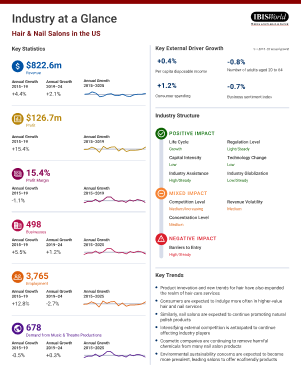
STATE INDUSTRY REPORT
What's in a State Industry Report?
State and county-level facts, trends and insights in a simplified format
Similar Industries in Massachusetts
Included in spotlight report.

Included in Report
- Our reports include 10 to 20 pages of data, analysis and charts, including:

IBISWorld is used by thousands of small businesses and start-ups to kick-start business plans
Spend time growing your business rather than digging around for industry ratios and financial projections
Apply for a bank loan with the confidence you know your industry inside and out
Use IBISWorld’s industry ratios and benchmarks to create realistic financial projections you can stand behind
IBISWorld Massachusetts Industry Reports enable you to:
- Discover key local industry trends
- Identify threats and opportunities at the subnational level
- Inform your business strategies and planning
- Understand the competitive environment in your precise location
This report on the Tour Operators industry in Massachusetts :
- Provides Market Size information to assist with planning and strategic decisions.
- Includes the necessary information to perform SWOT, PESTLE and STEER analysis.
- Helps you understand market dynamics to give you a deeper understanding of industry competition and the supply chain.
- Analyses key performance and operational metrics so that you can benchmark against your own business, that of your customers’ businesses, or your competitors’ businesses.
The Tour Operators industry in Massachusetts market research report includes:
- Historical data and analysis for the key drivers of this industry
- A five-year forecast of the market and noted trends
- Analysis of the economic impact of external factors on the local industry
- A breakdown of industry market share by county
- And of course, much more
IBISWorld provides industry research on thousands of industries around the world. Our clients rely on our information and data to stay up to date on business and industry trends across all sectors of the economy. This industry report includes thoroughly researched, reliable and current information that will help you make faster, better business decisions.
Total Current Assets / Total Current Liabilities
This ratio is a rough indication of a firm’s ability to service its current obligations. Generally, the higher the current ratio, the greater the "cushion" between current obligations and a firm’s ability to pay them. While a stronger ratio shows that the numbers for current assets exceed those for current liabilities, the composition and quality of current assets are critical factors in the analysis of an individual firm’s liquidity.
Total Revenue / Accounts Receivable
365 / Receivables Turnover Ratio
This figure expresses the average number of days that receivables are outstanding. Generally, the greater the number of days outstanding, the greater the probability of delinquencies in accounts receivable. A comparison of this ratio may indicate the extent of a company’s control over credit and collections. However, companies within the same industry may have different terms offered to customers, which must be considered.
Total Revenue / Closing Inventory
This is an efficiency ratio, which indicates the average liquidity of the inventory or whether a business has over or under stocked inventory. This ratio is also known as "inventory turnover" and is often calculated using "cost of sales" rather than "total revenue." This ratio is not very relevant for financial, construction and real estate industries.
365 / Inventory Turnover Ratio
Dividing the inventory turnover ratio into 365 days yields the average length of time units are in inventory.
Total Revenue / Net Working Capital
Because it reflects the ability to finance current operations, working capital is a measure of the margin of protection for current creditors. When you relate the level of sales resulting from operations to the underlying working capital, you can measure how efficiently working capital is being used. *Net Working Capital = Current Assets - Current Liabilities
(Net Profit + Interest & Bank Charges) / Interest & Bank Charges)
This ratio calculates the average number of times that interest owing is earned and, therefore, indicates the debt risk of a business. The larger the ratio, the more able a firm is to cover its interest obligations on debt. This ratio is not very relevant for financial industries. This ratio is also known as "times interest earned."
Total Liabilities / Total Equity
This is a solvency ratio, which indicates a firm's ability to pay its long-term debts. The lower the positive ratio is, the more solvent the business. The debt to equity ratio also provides information on the capital structure of a business, the extent to which a firm's capital is financed through debt. This ratio is relevant for all industries.
Total Liabilities / Total Assets
This is a solvency ratio indicating a firm's ability to pay its long-term debts, the amount of debt outstanding in relation to the amount of capital. The lower the ratio, the more solvent the business is.
(Net Fixed Assets * 100) / Equity
Net fixed assets represent long-term investment, so this percentage indicates relative capital investment structure.
Total Revenue / Equity
It indicates the profitability of a business, relating the total business revenue to the amount of investment committed to earning that income. This ratio provides an indication of the economic productivity of capital.
(Net Profit * 100) / Equity
This percentage indicates the profitability of a business, relating the business income to the amount of investment committed to earning that income. This percentage is also known as "return on investment" or "return on equity." The higher the percentage, the relatively better profitability is.
(Net Profit + Interest and Bank Charges) * 100 / Total Assets
This percentage, also known as "return on total investment," is a relative measure of profitability and represents the rate of return earned on the investment of total assets by a business. It reflects the combined effect of both the operating and the financing/investing activities of a business. The higher the percentage, the better profitability is.
(Total Current Assets * 100) / Total Assets
This percentage represents the total of cash and other resources that are expected to be realized in cash, or sold or consumed within one year or the normal operating cycle of the business, whichever is longer.
(Accounts Receivable * 100) / Total Assets
This percentage represents all claims against debtors arising from the sale of goods and services and any other miscellaneous claims with respect to non-trade transaction. It excludes loan receivables and some receivables from related parties.
(Closing Inventory * 100) / Total Assets
This percentage represents tangible assets held for sale in the ordinary course of business, or goods in the process of production for such sale, or materials to be consumed in the production of goods and services for sale. It excludes assets held for rental purposes.
(Other Current Assets * 100) / Total Assets
This percentage represents all current assets not accounted for in accounts receivable and closing inventory.
(Net Tangible & Intangible Assets * 100) / Total Assets
This percentage represents tangible or intangible property held by businesses for use in the production or supply of goods and services or for rental to others in the regular operations of the business. It excludes those assets intended for sale. Examples of such items are plant, equipment, patents, goodwill, etc. Valuation of net fixed assets is the recorded net value of accumulated depreciation, amortization and depletion.
(All Other Assets & Adjustments * 100) / Total Assets
This percentage represents all other assets not elsewhere recorded, such as long-term bonds.
Average Total Assets
This figure represents the average value of all resources controlled by an enterprise as a result of past transactions or events from which future economic benefits may be obtained.
(Total Current Liabilities * 100) / Total Assets
This percentage represents obligations that are expected to be paid within one year, or within the normal operating cycle, whichever is longer. Current liabilities are generally paid out of current assets or through creation of other current liabilities. Examples of such liabilities include accounts payable, customer advances, etc.
(Current Bank Loans * 100) / Total Assets
This percentage represents all current loans and notes payable to Canadian chartered banks and foreign bank subsidiaries, with the exception of loans from a foreign bank, loans secured by real estate mortgages, bankers acceptances, bank mortgages and the current portion of long-term bank loans.
(Other Current Liabilities * 100) / Total Assets
(Long-Term Liabilities * 100) / Total Assets
This percentage represents obligations that are not reasonably expected to be liquidated within the normal operating cycle of the business but, instead, are payable at some date beyond that time. It includes obligations such as long-term bank loans and notes payable to Canadian chartered banks and foreign subsidiaries, with the exception of loans secured by real estate mortgages, loans from foreign banks and bank mortgages and other long-term liabilities.
(Total Liabilities * 100) / Total Assets
This percentage represents the obligations of an enterprise arising from past transactions or events, the settlements of which may result in the transfer of assets, provision of services or other yielding of economic benefits in the future.
(Total Equity * 100) / Total Assets
This percentage represents the net worth of businesses and includes elements such as the value of common and preferred shares, as well as earned, contributed and other surpluses.
Average Total Liabilities + Average Total Equity
This figure represents the sum of two separate line items, which are added together and checked against a company’s total assets. This figure must match total assets to ensure a balance sheet is properly balanced.
Trusted by More Than 10,000 Clients Around the World

Thousands of Clients across Europe trust IBISWorld to understand industry trends


Press release
- Press releases
- TUI Group focuses on growth...
- TUI Stories
- FY24 Q1 Results
- TUI returns to the Prime Standard
- Finance Communication
- Interviews, speeches & presentations
TUI Group focuses on growth in Tours & Activities
- Over 170,000 experiences available through a unique combination of digital platform and on-site delivery
- Recent months used for development: Contactless, digital service is customer favourite and will be continuously expanded
TUI, the world's leading tourism group, is strengthening its commitment to Tours & Activities across all distribution channels. A total of over 170,000 excursions, activities, tickets and transfers are now available to partners, travel agents and customers in more than 140 countries.
"The global Tours & Activities market will start to recover as early as 2021, and the previous record year of 2019 will be eclipsed by 2023," said TUI Musement CEO David Schelp. "Up until now the market has been characterised by a multitude of small, very local suppliers – a large brand like TUI can provide security and reliability as a common platform."
"We have actively used the last few months to further optimise experiences for customers and partners," said Alessandro Petazzi, Chief Growth Officer of TUI Musement. "We have a clear goal; to make more choice more easily accessible to more people." Experiences during a trip are popular, but in recent months there has also been growth in bookings for activities in customers’ hometowns or regions.
"Another trend we see is the growing popularity and demand for digital service via our apps and websites. Our digital service has been expanded in a targeted manner and is now one of the main drivers of customer satisfaction, with the personal, digital service via chat being a customer favourite." Schelp adds.
In addition to digital service, the experiences themselves have also been adapted according to the current situation: 85 percent of all experiences can be cancelled free of charge up to 24 hours before they start. With hygiene and safety standards above the current market standard, a quick restart will be possible during 2021.
All experiences can be booked at tui.com/excursions and via the TUI App.
About TUI Musement
TUI Musement is a global Tours & Activities business that combines scalable digital platforms with personalised in-destination service by local teams, to deliver products in three main business lines:
Experiences: Excursions, activities & tickets
Transfers: Between airports, hotels and ports
- Tours: Multi-day itineraries encompassing flights, hotels, experiences and transfers
Available in all major city and sun & beach destinations, products are developed in-house or sourced from leading travel businesses. They are distributed to customers, including the 20+ million TUI customers, through the TUI websites and apps, in-destination local teams and B2B partners, including some of the world's leading OTAs, tour operators, airlines, hotels, travel agencies and cruise lines. TUI Musement is one of the major growth areas of the TUI Group.
About TUI Group
The TUI Group is one of the world's leading tourism groups and operates worldwide. The Group is headquartered in Germany. TUI shares are listed in the Prime Standard of the Frankfurt Stock Exchange, in the regulated market of the Lower Saxony Stock Exchange in Hanover and in the FTSE 250, an index of the London Stock Exchange. TUI Group offers its 19 million customers integrated services from a single source and forms the entire tourism value chain under one roof. The Group owns over 400 hotels and resorts with premium brands such as RIU, TUI Blue and Robinson and 16 cruise ships, ranging from the MS Europa and MS Europa 2 in the luxury class and expedition ships in the HANSEATIC class to the Mein Schiff fleet of TUI Cruises and cruise ships operated by Marella Cruises in the UK. The Group also includes Europe's leading tour operator brands and online marketing platforms, for example for hotel-only or flight-only offers, five airlines with more than 130 modern medium- and long-haul aircraft and around 1,200 travel agencies. In addition to expanding its core business with hotels and cruises via successful joint ventures and activities in vacation destinations, TUI is increasingly focusing on the expansion of digital platforms. The Group is transforming itself into a global tourism platform company.
Global responsibility for sustainable economic, environmental and social action is at the heart of our corporate culture. With projects in 25 countries, the TUI Care Foundation initiated by TUI focuses on the positive effects of tourism, on education and training and on strengthening environmental and social standards. In this way, it supports the development of vacation destinations. The globally active TUI Care Foundation initiates projects that create new opportunities for the next generation.

Magnus Hüttenberend
We use cookies to provide you with an optimized website experience. They include cookies for the operation and optimization of the website as well as cookies for analyses, retargeting and to provide personalised content on websites by third party providers. By clicking on Accept you are agreeing to the use of non-essential cookies. If you don't want that, you can Decline All the use of cookies or change your Settings at any time. For more information, including the processing of data by third party providers, see our Cookie Notice . You can find further information on the use of cookies at any time in our Cookie Notice and our Privacy policy . You will find the Imprint here.
Choose which cookies are permitted by using the “Status”-Switch. Save your settings with the button “I Agree”.
You can find further information on the use of cookies at any time in our Cookie Notice and our Privacy policy . You will find the Imprint here.
Comprehensive Guide to Marketing a Tour Business

By Rezdy — 11 Sep 2023
1. The importance of sales and marketing for tour operators
2. the 7 p's of tourism marketing, 3. tour operator marketing channels, 4. devising your tour marketing plan, 5. tips for selling tours, 6. summary.
Whether you’ve been in the tourism industry for decades or just getting started, it’s likely that you’ve found yourself lost in the maze of marketing struggles. After all, tour marketing is notoriously difficult. It’s hard to stand out from the crowd when everyone else is vying for the attention of the same adventurous souls.
But that doesn’t mean effective tour operator marketing is impossible. With the right tour marketing strategies in place, you can attract the right audience to your business.
In this tour marketing guide, we’ll equip you with the tools and knowledge to conquer the challenges of marketing and marketing in the dynamic tourism industry.
1. The importance of sales and marketing for tour operators

In the competitive world of tourism, effective tour marketing and sales strategies are vital for the success of tour operators. While often used interchangeably, sales and marketing serve distinct roles in driving business growth and attracting customers.
Sales vs marketing
Sales and marketing are two complementary functions that work towards a common goal – generating revenue and increasing tour sales and customer engagement. However, they differ in their approaches and objectives.
Sales: Sales focus on the direct interaction with potential customers to convert leads into bookings or sales. Sales representatives are responsible for building relationships, addressing customer inquiries, negotiating, and ultimately closing the deal.
Marketing: Marketing, on the other hand, involves a broader set of activities aimed at creating brand awareness, attracting leads, and nurturing customer interest. Tour business marketing encompasses strategies and tactics for promoting products or services for tours, attractions or activities to a wider audience.
2. The 7 P's of tourism marketing
When it comes to marketing your tourism business , tour operators need to understand and implement the 7 P’s of marketing. These seven elements are essential for developing a comprehensive tour operator marketing strategy:
- Product: The core offering of the tour business, which includes the tours, experiences, and services provided. Creating unique and appealing products is crucial for attracting customers.
- Place: Refers to the distribution channels and locations where customers can purchase or access the tour services. A strong presence in the right locations can significantly impact a tour operator’s success.
- Price: Determining the right pricing strategy is vital to strike a balance between attracting customers and ensuring profitability. Pricing should reflect the value of the experience provided.
- Promotion: This element involves all the promotional activities aimed at raising awareness about the tour business, including advertising, public relations, and sales promotions.
- People: The personnel within the tour business play a critical role in customer interactions. Well-trained and customer-oriented staff can enhance the overall customer experience.
- Processes: Efficient processes ensure smooth operations, from booking and payment to tour execution. Streamlining processes can lead to increased customer satisfaction.
- Physical Evidence: This refers to the tangible aspects of the tour experience, such as brochures, website design, social media presence and overall branding. A strong visual identity can leave a lasting impression on potential customers and help you sell more tours .
3. Tour operator marketing channels

Tour operators have an array of marketing channels to reach their target audience. Leveraging the right mix of these channels is essential for improving your marketing strategy .
Social media
Social media has become an indispensable tour marketing platform for businesses to engage with customers and showcase their offerings. Through platforms like Facebook, Instagram, TikTok, and YouTube, tour operators can share stunning visuals, engaging videos, and valuable content to capture the interest of potential customers.
In the realm of social media marketing, there are three major types:
- Owned media , referring to the content and channels that the tour operator owns and controls, such as their website and social media profiles.
- Earned media , including mentions, shares, and reviews from customers or influencers.
- Paid media , involving sponsored posts or advertisements on social media platforms.
In the age of digital communication, email marketing continues to be a highly effective advertising tactic for tour operators to engage with their customers on a personal level. With its ability to deliver targeted messages directly to customers’ inboxes, email marketing plays a crucial role in nurturing customer relationships and encouraging repeat bookings.
Search engines
Harnessing the power of search engines is crucial for tour operators to be discoverable online.
- Organic SEO: Organic SEO is the process of optimizing a tour operator’s website and online presence to improve its ranking in the non-paid (organic) search results of search engines like Google, Bing, and Yahoo. An SEO strategy is invaluable when it comes to getting quality traffic . When potential customers search for tour-related keywords, a well-optimized website is more likely to appear higher in the search engine results pages (SERPs), increasing the chances of attracting organic traffic.
- Paid search: Often implemented through platforms like Google Ads (formerly known as Google AdWords), Paid search is a form of online advertising where tour operators bid on specific keywords to have their ads displayed at the top of the search engine results pages. Unlike organic SEO, where ranking is achieved through optimization efforts, paid search allows businesses to instantly appear in prominent positions for selected keywords upon bidding.
Tour operators
Collaborating with other tour operators can be a mutually beneficial tour marketing strategy. Forming partnerships, promoting and selling other tour operators , or offering combined packages empowers tour operators to expand their reach and attract new customer segments.
Industry events
When it comes to marketing, tour and travel industry events provide an excellent platform for tour operators to showcase their services to a target audience. Industry events also provide valuable networking opportunities to connect with potential customers and industry partners.
Travel agents
Tour operators can benefit from partnering with travel agents and Online Travel Agencies (OTAs). These partnerships can expose the tour business to a broader audience, tapping into the agents’ or platforms’ existing customer base.
Establishing good relationships with suppliers, such as hotels and restaurants, can lead to referrals and collaborations. Satisfied suppliers are more likely to recommend a tour operator to their customers.
Happy customers can become the most effective tour operator marketing tools. Positive reviews, word-of-mouth referrals, and user-generated content on social media and review platforms can significantly influence potential customers’ decision-making.
Influencers
Partnering with influencers who have a significant following in the travel niche can amplify the tour operator’s reach. Influencers can create engaging content and reviews that resonate with their audience, generating interest in the tour services.
4. Devising your tour marketing plan

A solid tour marketing plan will form the foundation of any future tourism marketing ideas that your business may create in the future.
Define target audience
The first step in crafting an effective tour marketing plan is to define your target audience. Understanding who your ideal customers are will guide all subsequent marketing efforts. Consider factors such as demographics (age, gender, location), interests, travel preferences, and spending habits.
Honing in on your target audience allows you to tailor your tour business marketing messages and experiences to resonate with their specific needs and desires.
Research competition
To stand out in a crowded market, it’s crucial to research and analyze your competition. Identify other tour operators offering similar services and assess their strengths, weaknesses, and unique selling propositions. Understanding what sets your competitors apart can help you position your tour business effectively and identify areas where you can differentiate yourself.
Set marketing goals
Establish clear and measurable tour marketing goals to guide your efforts. These goals should be aligned with your overall business objectives and should be specific, achievable, relevant, and time-bound (SMART). Common tour operator marketing goals include increasing website traffic, generating leads, boosting bookings, enhancing customer engagement, and improving customer retention. Having well-defined goals will allow you to track progress and make data-driven decisions.
Choose marketing channels
With a diverse range of tour marketing channels available, it’s essential to select the ones that align with your target audience and marketing goals. Effective marketing channels for tour operators that you will want to consider include:
- Website and SEO: A well-optimized website is the foundation of your online presence. Implement search engine optimization (SEO) strategies to improve your website’s visibility in search results.
- Social Media: Leverage social media platforms to showcase your tours, engage with customers, and build a community. Choose platforms that align with your target audience’s preferences, such as Facebook, Instagram, Twitter, or YouTube.
- Email Marketing: Nurture customer relationships through personalized email campaigns, offering exclusive offers, updates, and valuable content to subscribers.
- Paid Advertising: Utilize paid search (Google Ads) and social media advertising to reach a broader audience and promote specific offers or tour packages.
- Content Marketing: Create compelling and informative content, such as blog posts, destination guides, videos, and visuals, to attract and engage potential customers.
- Partnerships and Collaborations: Forge partnerships with other tour operators, travel agencies, hotels, and local businesses to expand your reach and offer combined packages.
Create compelling content
Content is a powerful tool for tour operators to showcase their offerings and connect with customers. Develop high-quality and compelling content that tells a story, evokes emotions, and inspires travel. Use captivating visuals, engaging videos, and informative blog posts to highlight the unique experiences your tours offer. You can also incorporate user-generated content and customer testimonials to build trust and credibility.
Track results
Measuring the effectiveness of your marketing efforts is essential to understand what works and what needs improvement. Implement tools like Google Analytics to monitor website traffic, conversion rates, and user behavior. Track the performance of your email campaigns and social media engagement metrics. Regularly review and analyze data to identify trends, assess the success of your marketing initiatives, and make informed adjustments to optimize your marketing plan.
5. Tips for selling tours

Here are our top tips for selling tours that both you and your customers love.
Know your product
A deep understanding of your tours is essential for effective sales. Familiarize yourself with every aspect of the tours you offer, from the destinations and itineraries to the unique experiences and inclusions. Be prepared to answer questions and provide detailed information to potential customers.
When you know your product inside out, you instill confidence in your customers and can address their needs effectively.
Be passionate
Passion is contagious and can make a significant difference in selling tours. Show enthusiasm and genuine excitement when discussing your tours with potential customers. Share your own experiences and stories to evoke emotions and create a sense of adventure. Customers that sense your passion are more likely to connect with your offerings and trust your recommendations.
Know your target market
Tailor your approach to match the preferences and interests of your target market. Different customer segments may have varying motivations for traveling and unique requirements. Personalize your sales pitch and offerings based on their preferences, whether they are seeking adventure, relaxation, family-friendly experiences, or cultural immersion. Understanding your target market allows you to position your tours effectively and appeal to their specific desires.
Have an answer
Anticipate common questions and objections that potential customers may have and be ready with well-informed answers. Addressing concerns promptly and confidently helps build trust and demonstrates your expertise. Having a comprehensive knowledge of your tours and the destinations you offer can also help you upsell and cross-sell additional services or experiences.
Be persistent
In the world of sales, persistence is key. Not every potential customer will make an immediate decision to book a tour. Follow up with leads, stay engaged with interested customers, and provide additional information as needed. Being persistent while maintaining a friendly and non-intrusive approach can eventually lead to successful conversions.
Leverage social media
Social media platforms are valuable tools for tour operators to connect with their audience and showcase their offerings. Utilize platforms like Facebook, Instagram, and YouTube to share stunning visuals, engaging videos, and informative content about your tours.
Engage with followers, respond to comments, and participate in travel-related conversations to build a community around your brand. Social media also provides opportunities for user-generated content, which can be highly influential in attracting new customers.
Offer incentives
Attract potential customers with special incentives and promotions. Consider offering limited-time discounts, early bird offers, or exclusive perks for those who book early. Incentives can create a sense of urgency and motivate customers to take action. Loyalty programs and referral rewards can also encourage repeat bookings and word-of-mouth marketing.
Follow up after sale
The customer journey doesn’t end with the sale; it continues with excellent post-sale support. Follow up with customers after their tour experiences to gather feedback and address any concerns they may have. A personalized follow-up shows that you care about their experience and can lead to positive reviews and repeat business. Happy and satisfied customers are more likely to recommend your tours to others, contributing to your tour business’s growth.
A well-executed sales approach, coupled with effective marketing efforts, not only drives bookings but also fosters customer loyalty and positive word-of-mouth. As you incorporate the above tips into your sales and marketing strategies, you can elevate your tour business and create memorable experiences for your customers.
Ready to supercharge your tour business’s sales and marketing efforts? Rezdy is your all-in-one marketing channel manager for streamlining operations, reaching new customers, and boosting bookings. With Rezdy as your tour booking software , you can reach a wider audience through our integrated marketing tools and tailor your offerings to your target audience with ease.
Sign up now for our 21-day free tria l and experience the power of Rezdy firsthand.
Start your FREE trial today!
No obligations, no commitment, no credit card required.
Just 21 days of full account access to check we are a good fit for your business.
- Travel, Tourism & Hospitality ›
Leisure Travel
Industry-specific and extensively researched technical data (partially from exclusive partnerships). A paid subscription is required for full access.
Market cap of leading tour operators worldwide 2023
As of September 2023, German-based multinational group TUI AG was the tour operator company with the highest market cap worldwide. As of that month, TUI's market cap exceeded three billion U.S. dollars. UK-based tour operator Jet2 plc and Australian company Flight Centre Travel Group Limited followed in the ranking, with a market cap of 2.96 billion and 2.8 billion U.S. dollars, respectively. Meanwhile, Booking Holdings recorded the highest market cap of leading online travel companies worldwide as of September 2023.
Market cap of leading travel agency and tour operator companies worldwide as of September 2023 (in million U.S. dollars)
- Immediate access to 1m+ statistics
- Incl. source references
- Download as PNG, PDF, XLS, PPT
Additional Information
Show sources information Show publisher information Use Ask Statista Research Service
September 2023
as of September 18, 2023
Other statistics on the topic
- Number of TUI AG employees worldwide 2011-2023, by region
- TUI UK Limited revenue 2015-2022
- Turnover of Hays Travel Limited in the UK 2008-2023
- Number of retail travel agents in the UK 2023, by retailer
To download this statistic in XLS format you need a Statista Account
To download this statistic in PNG format you need a Statista Account
To download this statistic in PDF format you need a Statista Account
To download this statistic in PPT format you need a Statista Account
As a Premium user you get access to the detailed source references and background information about this statistic.
As a Premium user you get access to background information and details about the release of this statistic.
As soon as this statistic is updated, you will immediately be notified via e-mail.
… to incorporate the statistic into your presentation at any time.
You need at least a Starter Account to use this feature.
- Immediate access to statistics, forecasts & reports
- Usage and publication rights
- Download in various formats
You only have access to basic statistics. This statistic is not included in your account.
- Instant access to 1m statistics
- Download in XLS, PDF & PNG format
- Detailed references
Business Solutions including all features.
Statistics on " Travel agencies in the United Kingdom (UK) "
- Annual output of travel agencies and tour operators in the UK 2010-2022
- Monthly output growth of travel agencies and tour operators in the UK 2019-2023
- Market size of the travel agency industry in the UK 2013-2023
- Revenue of travel agencies in the UK 2008-2021
- Gross value added (GVA): travel agencies in the UK 2008-2021
- Travel agency, tour operator, and reservation services employment in the UK 2015-2021
- Number of businesses in the travel agency industry in the UK 2023, by employment size
- Number of businesses in the travel agency industry in the UK 2013-2023
- Number of retail travel agents in the UK 2019-2023
- Leading travel agents ranked by number of outlets in the UK 2024
- Most popular amusement, cruise, and travel brands in the UK Q4 2023
- TUI UK Limited net income 2015-2022
- Market cap of leading online travel companies worldwide 2023
- Leading online travel companies worldwide 2022-2023, by EV/EBITDA
- Key information on the online travel agency industry in the UK January 2023
- Revenue of On the Beach Group plc in the UK 2012-2022, by segment
- Net income of On the Beach in the UK 2014-2022
- Revenue of Tripadvisor worldwide 2012-2023, by region
- Lastminute.com Group revenue worldwide 2019-2022, by country
- Skyscanner annual revenue 2011-2021
- Preferred methods to book the next overseas holiday in the UK October 2022
- Preferred methods to book the next overseas holiday in the UK October 2022, by age
- Leading holiday travel provider websites in the UK Q4 2023, by share of voice
- Hotel / private accommodation online bookings by brand in the UK 2023
- Package holiday bookings by brand in the UK 2023
Other statistics that may interest you Travel agencies in the United Kingdom (UK)
- Premium Statistic Annual output of travel agencies and tour operators in the UK 2010-2022
- Premium Statistic Monthly output growth of travel agencies and tour operators in the UK 2019-2023
- Premium Statistic Market size of the travel agency industry in the UK 2013-2023
- Premium Statistic Revenue of travel agencies in the UK 2008-2021
- Premium Statistic Gross value added (GVA): travel agencies in the UK 2008-2021
- Premium Statistic Travel agency, tour operator, and reservation services employment in the UK 2015-2021
- Basic Statistic Number of businesses in the travel agency industry in the UK 2023, by employment size
- Premium Statistic Number of businesses in the travel agency industry in the UK 2013-2023
Travel agents
- Premium Statistic Number of retail travel agents in the UK 2019-2023
- Premium Statistic Number of retail travel agents in the UK 2023, by retailer
- Premium Statistic Leading travel agents ranked by number of outlets in the UK 2024
- Basic Statistic Most popular amusement, cruise, and travel brands in the UK Q4 2023
- Premium Statistic TUI UK Limited revenue 2015-2022
- Premium Statistic TUI UK Limited net income 2015-2022
- Basic Statistic Number of TUI AG employees worldwide 2011-2023, by region
- Premium Statistic Turnover of Hays Travel Limited in the UK 2008-2023
Online travel agencies
- Basic Statistic Market cap of leading online travel companies worldwide 2023
- Premium Statistic Leading online travel companies worldwide 2022-2023, by EV/EBITDA
- Premium Statistic Key information on the online travel agency industry in the UK January 2023
- Premium Statistic Revenue of On the Beach Group plc in the UK 2012-2022, by segment
- Premium Statistic Net income of On the Beach in the UK 2014-2022
- Premium Statistic Revenue of Tripadvisor worldwide 2012-2023, by region
- Premium Statistic Lastminute.com Group revenue worldwide 2019-2022, by country
- Premium Statistic Skyscanner annual revenue 2011-2021
Booking behavior
- Premium Statistic Preferred methods to book the next overseas holiday in the UK October 2022
- Premium Statistic Preferred methods to book the next overseas holiday in the UK October 2022, by age
- Premium Statistic Leading holiday travel provider websites in the UK Q4 2023, by share of voice
- Premium Statistic Hotel / private accommodation online bookings by brand in the UK 2023
- Premium Statistic Package holiday bookings by brand in the UK 2023
Further Content: You might find this interesting as well

IMAGES
VIDEO
COMMENTS
In 2004, Responsible Travel carried out a survey to find out what UK travellers though about mass tourism, and the results were clear. 76 percent of people reported that they didn't like the way mass tourism damages the local environment and culture, with 52 percent of people feeling that mass market tour operators didn't offer the most ...
Specialist tour operators are tour operators in the travel industry who focuses on offering specialized and niche travel experiences. Unlike mass market tour operators who cater to broad, general travel demands, specialist tour operators offer in-depth expertise in specific areas. These can range from eco-tourism, adventure travel, cultural ...
Mass tourism is a prominent part of the tourism industry. Associated with the traditional package holiday, well-known holiday resorts and famous tourist attractions, many areas both benefit and suffer at the hands of mass tourism. ... Whether this by via a coach tour, a day trip or through a tour operator, travel in organised groups brings ...
Specialist Tour Operators: A specialist tour operator is different from mass-market tour operator . Here, they put together packages with a combination of accommodation , travels, and sometimes transfers. ... Mass Tour Operators: A mass-market tour operator is a tour operator , like Thomas Cook or Thomson's who deal with about any type of ...
The AITO Travel Insights Report 2020, compiled in association with leading travel data insight agency SPIKE, has - for the 5th year in succession - delved into the travel habits of the specialist traveller, who largely falls into the 50+ market (80%, with an average age of 61), usually travels as a couple (57.4%) and tends to take two or ...
Mass-market tour operators ... Specialist tour operators are more prevalent as they respond well to the trend for tailor-made holidays with the specialist products and expertise in markets. Sometimes specialist tour operators focus on a particular destination, rather than a type of holiday. Inbound tour operators cater for the needs of overseas ...
There are mass market clients who pay for a high priced, quality product and other mass market clients who pay the cheapest price possible for a volume-intensive product ( Table 3 ). Carey et al ...
AITO members promote an ethical and sustainable approach to travel, to help maintain their travel destinations. All AITO members sign up to our Quality Charter, ensuring high standards of practice. AITO is the best place to find authentic, original holidays from quality specialist travel companies. View the 2024 AITO Guide to Specialist Travel.
Tour operators are the holiday companies that many of us use when booking a holiday, they make contracts with airlines, hotels and other transport companies to put the package together then all the holiday details gets distributed to travel agents or straigth to the customers. types of tour operators: * Mass market operator, examples are first ...
There are two types of tour operators, mass market and specialist. Mass Market tour operator- A mass market tour operator is someone who organises holidays, trips and tours for groups of people at a time, they arrange flights, baggage and any extra add ons known as auxiliary services. An example of a mass market tour operator is TUI, they book ...
Mass Market - 2 weeks holidays for example by Thomson Specialist Operators- special destinations for example by Cox & Kings Domestic Operators- e.g. YHA or PGL Incoming Tour Operators- e.g. Evan Evans Tour, Gullivers Sports Travel Mass Market A mass market tour operator is an organisation which provides holidays for general and popular travellers.
But the package revenue shares can go quite high, even at a traditional mainline carrier. Japan Airlines Group (JAL) — certainly not a discount packager like Jet2 — sold $485 million of packaged tours in 2021, accounting for ~10% of group revenue, according to IdeaWorks .
An example of a mass market tour operator is TUI, they book for all types of people and groups. Specialist tour operator- A specialist tour operator appeals to a certain group or individuals. ... What is the difference between specialist operator and mass market operator? * Specialist operator, examples are Kuoni, cox & kings, Himalayan ...
Tour Operators in Massachusetts - current trends and industry outlook (2019-2029) The Tour Operators industry in Massachusetts is expected to grow an annualized x.x% to /$1.6 billion over the five years to 2024, while the national industry will likely grow at a rate of x.x% during the same period.
The Group also includes Europe's leading tour operator brands and online marketing platforms, for example for hotel-only or flight-only offers, five airlines with more than 130 modern medium- and long-haul aircraft and around 1,200 travel agencies. In addition to expanding its core business with hotels and cruises via successful joint ventures ...
Mass market and specialist tour operators. Mass market- A mass market tour operator which organises tours for groups of people at a time will be able to arrange transport, accommodation, activities and any other services all in one package r separately if need be Activities and any extra services that might be needed. The Thomas Cook Group is ...
The rise of the specialist tour operators and why they'll be able to give you a better holiday compared to a large multi-national operator. Toggle navigation. menu. 1-866-821-6866 . ... with 52 percent of people feeling that mass market tour operators didn't offer the most interesting vacations. ...
5 types of tour operators. 1.mass market tour operators2.specialist tour operators3.domestic tour operators4.inbound tour operators 5.outbound tour operators. mass market tour operators. they sell holiday packages to the mass market. specialist tour operators. they provide holiday packages to a specific type of customer.
Market size of the tour operator industry in the United Kingdom (UK) from 2013 to 2022, with a forecast for 2023 (in million GBP) [Graph], IBISWorld, March 1, 2023. [Online].
When it comes to marketing your tourism business, tour operators need to understand and implement the 7 P's of marketing.These seven elements are essential for developing a comprehensive tour operator marketing strategy: Product: The core offering of the tour business, which includes the tours, experiences, and services provided. Creating unique and appealing products is crucial for ...
The latest ATOL data published by the Civil Aviation Authority shows that Jet2holidays is now the UK's largest tour operator, after increasing its ATOL licence for the year by over 500,000 to 5,859,600 passengers. ... On top of this huge summer programme the package holiday specialist, ...
Market cap of leading travel agency and tour operator companies worldwide as of September 2023 (in million U.S. dollars) [Graph], Skift, September 18, 2023. [Online].